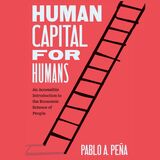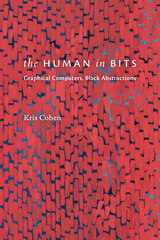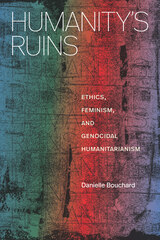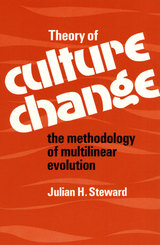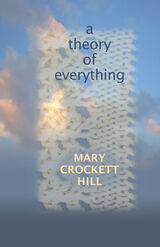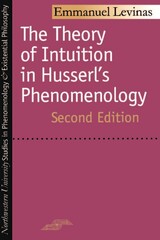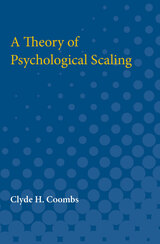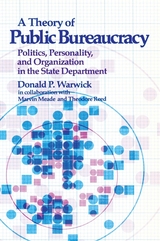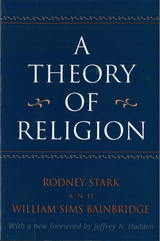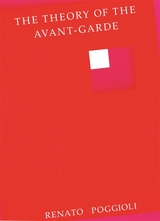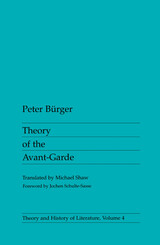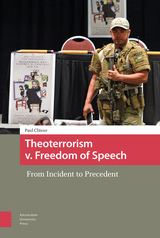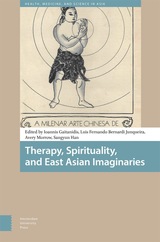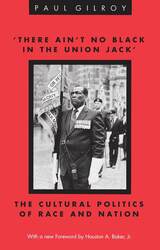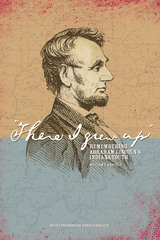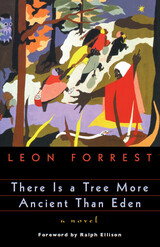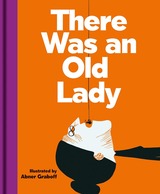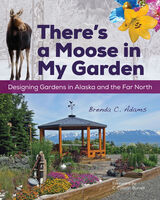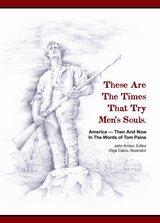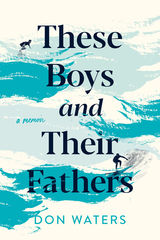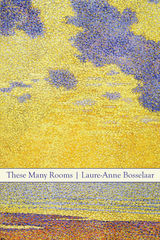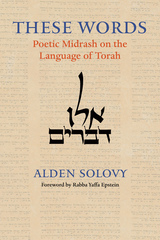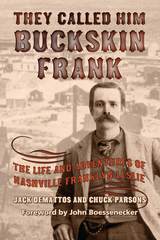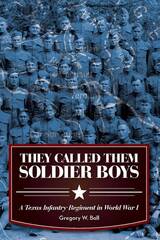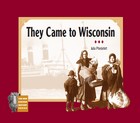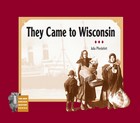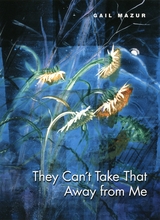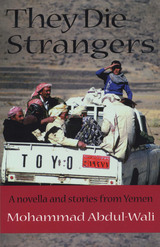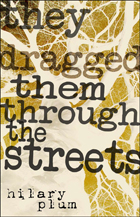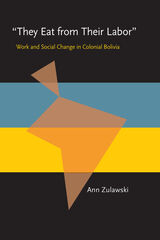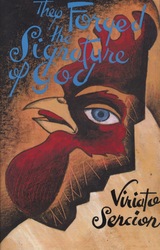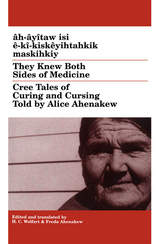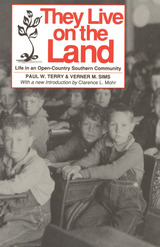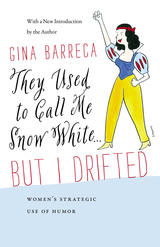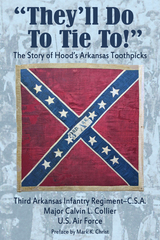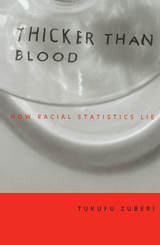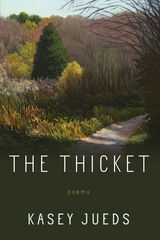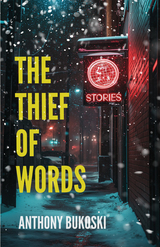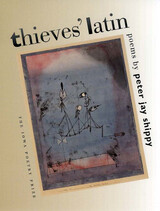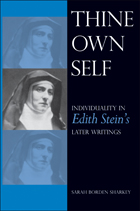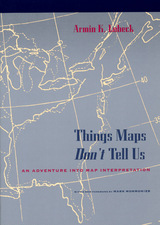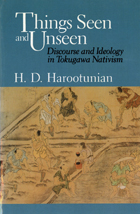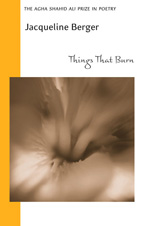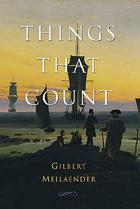Theory of Culture Change: THE METHODOLOGY OF MULTILINEAR EVOLUTION
Julian H. Steward
University of Illinois Press, 1955 "In a collection of papers spanning
some 20 years of work, Steward argues persuasively that cultural change
consists of complex, continuing processes, rather than isolable acts or
events of unitary character ('diffusion' versus 'independent invention')....
With the increasing preponderance of studies of cultural change in archaeology
as well as anthropology this volume assumes as much importance for the prehistorian
as for the student of contemporary societies."
-- American Antiquity
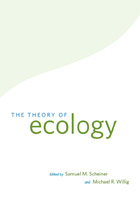 The Theory of Ecology
Edited by Samuel M. Scheiner and Michael R. Willig
University of Chicago Press, 2011 Despite claims to the contrary, the science of ecology has a long history of building theories. Many ecological theories are mathematical, computational, or statistical, though, and rarely have attempts been made to organize or extrapolate these models into broader theories. The Theory of Ecology brings together some of the most respected and creative theoretical ecologists of this era to advance a comprehensive, conceptual articulation of ecological theories. The contributors cover a wide range of topics, from ecological niche theory to population dynamic theory to island biogeography theory. Collectively, the chapters ably demonstrate how theory in ecology accounts for observations about the natural world and how models provide predictive understandings. It organizes these models into constitutive domains that highlight the strengths and weaknesses of ecological understanding. This book is a milestone in ecological theory and is certain to motivate future empirical and theoretical work in one of the most exciting and active domains of the life sciences.
The Theory of Economic Development: An Inquiry into Profits, Capital, Credit, Interest, and the Business Cycle
Joseph A. Schumpeter
Harvard University Press This is a translation from the second German edition of a book which first appeared in 1911 and has since that time been translated into Italian and French and is about to appear in Japanese. Fundamentally it is an attempt at framing a purely theoretical description of the nature and mechanism of economic change or evolution, its motive power, and the phenomena incident to it. Although the book aroused much controversy when first published, the general view and some of the individual theorems have been gaining ground and have exerted considerable influence on contemporary work in Europe and in America.
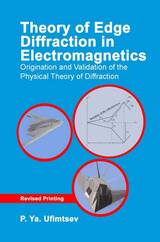 Theory of Edge Diffraction in Electromagnetics: Origination and validation of the physical theory of diffraction
P.Ya. Ufimtsev
The Institution of Engineering and Technology, 2009 This book is an essential resource for researchers involved in designing antennas and RCS calculations. It is also useful for students studying high frequency diffraction techniques. It contains basic original ideas of the Physical Theory of Diffraction (PTD), examples of its practical application, and its validation by the mathematical theory of diffraction. The derived analytic expressions are convenient for numerical calculations and clearly illustrate the physical structure of the scattered field. The text's key topics include: Theory of diffraction at black bodies introduces the Shadow Radiation, a fundamental component of the scattered field; RCS of finite bodies of revolution-cones, paraboloids, etc.; models of construction elements for aircraft and missiles; scheme for measurement of that part of a scattered field which is radiated by the diffraction (so-called nonuniform) currents induced on scattering objects; development of the parabolic equation method for investigation of edge-diffraction; and a new exact and asymptotic solutions in the strip diffraction problems, including scattering at an open resonator.
 The Theory of Epistemic Rationality
Richard Foley
Harvard University Press, 1987 How do we know reality? The prevalent theory has been that we construct knowledge upon absolute foundations, the way the Egyptians built pyramids. In recent years this foundationalist account has come under attack from a number of directions, from those who want to make epistemology a branch of cognitive science to those who reject out of hand the search for foundational certainty. Richard Foley’s book defends a modified form of foundationalism that does not depend on our having privileged access to the truth of foundational propositions.
Foley presents the idea of rational belief going back to Aristotle’s concept of rationality—as the basis for what he calls “subjective foundationalism.” Epistemological rationality is subjective for Foley because he sees the rationality of a belief as dependent on the cognitive resources and tendencies of the believer. He is able thereby to accommodate the strong “internalist” intuition telling us that whether it is rational for us to believe something depends on how that thing appears within our perspective on the world. But Foley removes a large part of the curse of subjectivism by making rationality dependent not on what the subject thinks, or is inclined to think at the moment of belief, but on what the subject would be inclined to think as a result of an ideally conducted reflection.
The foundationalists, he asserts, with their obsessive search for guarantors of truth, get the structure of epistemic rationality right but the spirit wrong. Foley gives a novel and provocative account of the nature of epistemic rationality.
A Theory of Everything
Mary Crockett Hill
Autumn House Press, 2009 Winner of the 2008 Autumn House Poetry Contest, selected by Naomi Shihab Nye. Crockett considers the intimacies of daily life and what it means to be interconnected.
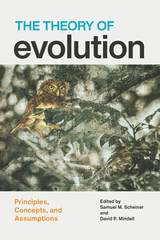 The Theory of Evolution: Principles, Concepts, and Assumptions
Edited by Samuel M. Scheiner and David P. Mindell
University of Chicago Press, 2019 Darwin’s nineteenth-century writings laid the foundations for modern studies of evolution, and theoretical developments in the mid-twentieth century fostered the Modern Synthesis. Since that time, a great deal of new biological knowledge has been generated, including details of the genetic code, lateral gene transfer, and developmental constraints. Our improved understanding of these and many other phenomena have been working their way into evolutionary theory, changing it and improving its correspondence with evolution in nature. And while the study of evolution is thriving both as a basic science to understand the world and in its applications in agriculture, medicine, and public health, the broad scope of evolution—operating across genes, whole organisms, clades, and ecosystems—presents a significant challenge for researchers seeking to integrate abundant new data and content into a general theory of evolution.
This book gives us that framework and synthesis for the twenty-first century. The Theory of Evolution presents a series of chapters by experts seeking this integration by addressing the current state of affairs across numerous fields within evolutionary biology, ranging from biogeography to multilevel selection, speciation, and macroevolutionary theory. By presenting current syntheses of evolution’s theoretical foundations and their growth in light of new datasets and analyses, this collection will enhance future research and understanding.
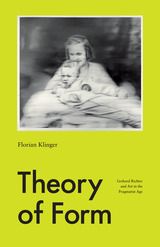 Theory of Form: Gerhard Richter and Art in the Pragmatist Age
Florian Klinger
University of Chicago Press, 2022 A pragmatist conception of artistic form, through a study of the painter Gerhard Richter.
In this study of the practice of contemporary painter Gerhard Richter, Florian Klinger proposes a fundamental change in the way we think about art today. In reaction to the exhaustion of the modernist-postmodernist paradigm’s negotiation of the “essence of art,” he takes Richter to pursue a pragmatist model that understands artistic form as action. Here form is no longer conceived according to what it says—as a vehicle of expression, representation, or realization of something other than itself—but strictly according to what it does.
Through its doing, Klinger argues, artistic form is not only more real but also more shared than non-artistic reality, and thus enables interaction under conditions where it would otherwise not be possible. It is a human practice aimed at testing and transforming the limits of shared reality, urgently needed in situations where such reality breaks down or turns precarious. Drawing on pragmatist thought, philosophical aesthetics, and art history, Klinger’s account of Richter’s practice offers a highly distinctive conceptual alternative for contemporary art in general.
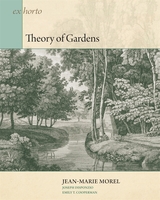 Theory of Gardens
Jean-Marie Morel
Harvard University Press Jean-Marie Morel (1728–1810), a leading French landscape designer and theorist, is now mainly remembered as the author of one of the fundamental eighteenth-century texts in the history of landscape architecture, the Théorie des jardins (1776; second edition, 1802). With his background as an engineer, Morel was instrumental in shaping the functions of landscape architecture, opening up a new professional domain by coining the term architecte-paysagiste, the precursor to the modern designation “landscape architect.”
Morel stands out among eighteenth-century theorists because of his interest in the natural processes that underlie the formation of landscape. His unique theoretical contribution was, therefore, an attempt to develop an approach to garden design grounded in the new understanding of natural processes, which brought together picturesque theory and landscape practice, taking into account a wide range of environmental factors that had an impact on the work of an architecte-paysagiste. Morel believed that an awareness of the character of each landscape was particularly important because of the emotional response that it was likely to elicit.
This translation marks the first time the 1776 edition of the Théorie des jardins is available in English.
 The Theory of German Word Order from the Renaissance to the Present
Aldo Scaglione
University of Minnesota Press, 1981 The Theory of German Word Order from the Renaissance to the Present was first published in 1981. Minnesota Archive Editions uses digital technology to make long unavailable books once again accessible, and are published unaltered from the original University of Minnesota Press editions. The uniquely systematic character of German word order and sentence structure has long been recognized as an important feature of the language and of its literary uses. This book is the first comprehensive survey of the way theorists and stylists have interpreted these features through the centuries. Aldo Scaglione contends that the story of this theoretical awareness is part of the emerging cultural and literary consciousness of the German nation, as well as a testing ground for contemporary linguistic typology. German speculation on the nature of a national language is, to Scaglione, best understood as a dialogue with the prevailing models of Latin, Italian, French, and English. His account of the debates over German word order is thus grounded in the complex historical circumstances from which they emerge: Renaissance grammarians took stock of German divergencies from the Latin cultural model, and those in the seventeenth century faced the challenges of French rationalism, nineteenth-century Romanticism and the many linguistic movements of the twentieth century have all cast new light upon the peculiarities of German sentence structure. Readers interested in historical syntax, rhetorical traditions, and the history of the German language will value both Scaglione's wide-ranging knowledge and his lively style.
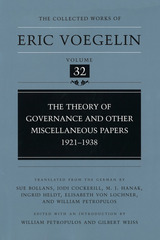 Theory of Governance and Other Miscellaneous Papers, 1921-1938 (CW32)
Eric Voegelin, Edited & Intro by William Petropulos & Gilbert Weiss, & Translated by William Petropulos, Jodi Cockerill, M. J. Hanak, Ingrid Heldt, Elisabeth von Lochner, & Sue Bollans
University of Missouri Press, 2004 This first of two volumes of Voegelin's miscellaneous papers brings together crucial writings, published for the first time, from the early, formative period of this scholar's thought. The book begins with Voegelin's dissertation on sociological method, completed under the direction of Othmar Spann and Hans Kelsen at the University of Vienna in 1922. It reveals an intimate knowledge of the writings of Georg Simmel and a skillful use of insights gained from Edmund Husserl's Logical Investigations and Ideas. The dissertation, and other smaller pieces written at this time, addresses problems that remained of great importance to Voegelin throughout his life: the relation of insight to language, the structure of the human being, and the human's spiritual center. They disclose both Voegelin's theoretical reference points during these early years, including the thought of Henri Bergson, Othmar Spann, Georg Simmel, and Edmund Husserl, as well the young scholar's remarkably independent approach to theoretical problems. Moreover, this volume includes a work that is fundamental to an understanding of Voegelin's theoretical development: his extended study on the "theory of governance," written between 1930 and 1932. It follows the issues that confront political society to their roots in the soul and in the soul's relationship to the ground of being. The Theory of Governance and Other Miscellaneous Papers presents a meditative-exegetic study of texts from Augustine, Descartes, and Husserl, early examples of the meditations that became central to Voegelin's later work. Other essays included in this volume such as "Theory of Law" and "Political Theory as Human Science" develop these theoretical insights and refine Voegelin's methodological tools. This volume will be of interest to all scholars of the work of Eric Voegelin and of the refoundation of political philosophy in the twentieth century in general.
 Theory of International Law
G. I. Tunkin
Harvard University Press, 1974 The 1970s promised important readjustments in relations among the great powers, perhaps a reconstituted Europe and Asia, as well as a possible new role for "third world" countries. National attitudes toward the law of nations both shaped and reflected developments of this nature. As a great power, the Soviet Union was a principal actor in what transpired, but until now there has been no systematic exposition in the English language of how Soviet jurists regarded the world legal order.
The present volume, published in Moscow in 1970, is the most profound and comprehensive study of international legal theory yet produced by a Soviet jurist. Its author, who holds the Chair of International Law at Moscow State University and for many years was the legal adviser to the USSR Ministry of Foreign Affairs, is widely credited with elaborating the juridical underpinnings of peaceful coexistence in the USSR from the mid-1950s. This book, earlier versions of which have appeared in Eastern and Western Europe, contains the fullest statement of his views.
Tunkin traces the development and shaping of international law since 1917, the processes of forming and modifying international legal rules, and the nature of state responsibility under the law of nations. Of special interest to the general reader and specialist in international affairs will be Tunkin's extensive discussion of the interaction among international law, foreign policy, and diplomacy; of the legal nature of international organizations; of the principal factors at work in international politics; and of the nature of legal ties among socialist countries. The latter has been a special concern following the Czechoslovak events of 1968 and the adoption of a comprehensive program for economic integration among socialist states.
For this American edition, Tunkin has brought his book up to date and Dr. Butler has supplied an introduction, a translation note, a list of the author's publications, and a glossary of Russian international legal terms.
 The Theory of International Prices: History, Criticism and Restatement
James W. Angell
Harvard University Press Marked changes in the world’s commercial and financial situation since the war have inevitably drawn an increasing amount of attention to international exchange and to the conditions that govern its terms. The present study is directed to one aspect of these conditions. In the first two sections Professor Angell traces the origin and development of the characteristic English theory of international exchange and the criticisms to which Continental economists subjected it. In the third section he attacks his subject from a fresh angle, taking into account at every point the nature of present-day banking and financial conditions and the many unprecedented phenomena the world has witnessed since 1914. His deductions will naturally awaken discussion both among bankers and among students of economics, and should result in a considerable clarifying of thought and practice on this vexed question of our time.
Theory of Intuition in Husserl's Phenomenology: Second Edition
Emmanuel Levinas
Northwestern University Press, 1995 In this landmark study, Emmanuel Levinas discusses the aspects and function of intuition in Husserl's thought and its meaning for philosophical self-reflection. An essential, and illuminating explication of central issues in Husserl's phenomenology, it is also important as a formative work of one of this century's most distinguished philosophers.
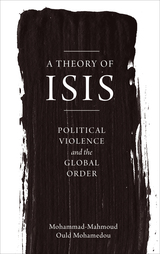 A Theory of ISIS: Political Violence and the Global Order
Mohammad-Mahmoud Ould Mohamedou
Pluto Press, 2017 In the course of a few years, the Islamic State of Iraq and Syria—more commonly known as ISIS—has become classified as the most dangerous terrorist organization in the world. It is the subject of intense Western scrutiny, demonized by all, and shrouded in numerous myths and narratives.
Against these established narratives, Mohammad-Mahmoud Ould Mohamedou now presents his new theory of ISIS. Tracing the genealogy of ISIS and documenting its evolution in Iraq and Syria, he argues that ISIS has actually transcended Osama Bin Laden’s original scheme of Al Qaeda, mutating into a unprecedented hybrid between postcolonial violence, postmodernity, and postglobalization. A Theory of ISIS offers an original take on the militant group. Mohamedou explains the proliferation of terrorist attacks on the West and deepens our understanding of the group's impact on the very nature of contemporary political violence.
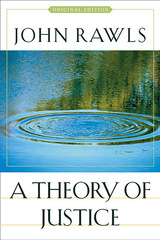 A Theory of Justice: Original Edition
John Rawls
Harvard University Press, 1971 John Rawls aims to express an essential part of the common core of the democratic tradition—justice as fairness—and to provide an alternative to utilitarianism, which had dominated the Anglo-Saxon tradition of political thought since the nineteenth century. Rawls substitutes the ideal of the social contract as a more satisfactory account of the basic rights and liberties of citizens as free and equal persons. “Each person,” writes Rawls, “possesses an inviolability founded on justice that even the welfare of society as a whole cannot override.” Advancing the ideas of Rousseau, Kant, Emerson, and Lincoln, Rawls’s theory is as powerful today as it was when first published.
Though the revised edition of A Theory of Justice, published in 1999, is the definitive statement of Rawls’s view, much of the extensive literature on his theory refers to the original. This first edition is available for scholars and serious students of Rawls’s work.
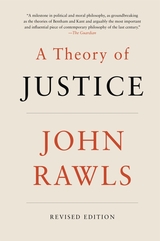 A Theory of Justice: Revised Edition
John Rawls
Harvard University Press, 1999 “A milestone in political and moral philosophy, as groundbreaking as the theories of Bentham and Kant and arguably the most important and influential piece of contemporary philosophy of the last century.” —The Guardian
The principles of justice that Rawls set forth in this book are those that free and rational people would accept in an “original position” of equality. In this hypothetical situation, which corresponds to the state of nature in social contract theory, no one knows their place in society; their class or social status; their fortune in the distribution of natural assets and abilities—their intelligence, strength, and the like—or even their conception of the good. Deliberating behind this “veil of ignorance,” people naturally determine their proper rights and duties. Thus, as Rawls writes, “each person possesses an inviolability founded on justice that even the welfare of society as a whole cannot override.”
Incorporating the ideas of Rousseau, Kant, Emerson, and Lincoln, Rawls’s theory is as powerful today as it was when first published in 1971. For more than half a century, A Theory of Justice has been taught and debated, celebrated and translated into more than thirty languages. This revised edition includes changes, discussed in the preface, that Rawls considered to be significant, especially to the discussions of liberty and primary social goods.
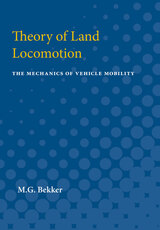 Theory of Land Locomotion: The Mechanics of Vehicle Mobility
M.G. Bekker
University of Michigan Press, 1956 Theory of Land Locomotion is a comprehensive source of the information now available on the relations between a motor vehicle and the physical environment in which it operates. It lays the foundation for a new type of applied mechanics by systematizing the accumulated experience of men who have worked closely with automotive problems over the past forty years--engineers, designers, technicians, and production men. The result is an integrated theory of land locomotion that will advance land transportation much as aerodynamics and hydrodynamics have helped the development of air and sea travel.Placing particular emphasis on off-the-road vehicles, the book discusses in detail problems of soil and snow mechanics; size-form relationships as an index of economy; terrain conditions; the process of moving tracks, skis, sleds, toboggans, rigid wheels, and pneumatic tires; static and dynamic behavior; and dimensional analysis, testing, and overall economy.
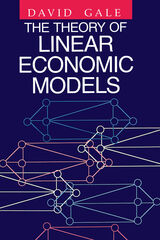 The Theory of Linear Economic Models
David Gale
University of Chicago Press, 1989 In the past few decades, methods of linear algebra have become central to economic analysis, replacing older tools such as the calculus. David Gale has provided the first complete and lucid treatment of important topics in mathematical economics which can be analyzed by linear models. This self-contained work requires few mathematical prerequisites and provides all necessary groundwork in the first few chapters. After introducing basic geometric concepts of vectors and vector spaces, Gale proceeds to give the main theorems on linear inequalities—theorems underpinning the theory of games, linear programming, and the Neumann model of growth. He then explores such subjects as linear programming; the theory of two-person games; static and dynamic theories of linear exchange models, including problems of equilibrium prices and dynamic stability; and methods of play, optimal strategies, and solutions of matrix games. This book should prove an invaluable reference source and text for mathematicians, engineers, economists, and those in many related areas.
Theory of Markets
Tun Thin
Harvard University Press Concerned primarily with oligopoly, this work includes a general study of pricing in three different markets—perfect competition, perfect monopoly, and imperfect competition. The solutions of these markets offered by Cournot, Smithies, Chamberlin, Stackelberg, Fellner, and Robinson are presented mathematically, followed by the author’s own version of the theory of rational pricing in oligopoly.
Previous authors have not allowed for all the variables arising from profit and price situations in the market. Here, more realistic assumptions and more complex analyses indicate that sellers in oligopoly situations do not always need to arrange specific agreements—hence, that “administered” pricing does not inevitably occur when the market is dominated by a few producers.
 The Theory of Monopolistic Competition: A Re-orientation of the Theory of Value, Eighth Edition
Edward Hastings Chamberlain
Harvard University Press Chamberlain's classic work, now in its eighth edition, continues to influence the fundamental thinking of economists and businessmen, and for the best of reasons: It is a basic treatise in theory which, unlike traditional theories of “perfect competition,” deals with the economic world we live in, including both price and nonprice competition, oligopoly, various degrees of monopoly, “differentiated” products, advertising, etc. Its influence has spread extensively as well as intensively—to new theoretical problems, such as economic dynamics and development, and to the analysis of an increasingly wide range of the so-called “applied” fields.
In this eighth edition of The Theory of Monopolistic Competition Professor Chamberlain has added three new appendices: The Definition of Selling Costs; Numbers and Elasticities; and The Origin and Early Development of Monopolistic Competition Theory. The index has been extensively revised and expanded. In successive earlier editions the author compiled a bibliography of 1497 items. He also added a new treatment of the cost curve of the firm, discussing in particular some current misconceptions as to the role of the laws of proportions and of the divisibility of factors in relation to economics and diseconomies of scale, and advancing a broader theory which assigns to both proportions and scale their proper roles.
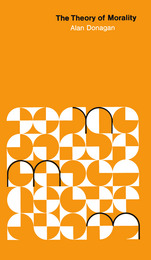 The Theory of Morality
Alan Donagan
University of Chicago Press, 1977 "Let us . . . nominate this the most important theoretical work on ethical or moral theory since John Rawls's Theory of Justice. If you have philosophical inclinations and want a good workout, this conscientious scrutiny of moral assumptions and expressions will be most rewarding. Donagan explores ways of acting in the Hebrew-Christian context, examines them in the light of natural law and rational theories, and proposes that formal patterns for conduct can emerge. All this is tightly reasoned, the argument is packed, but the language is clear."—Christian Century
"The man value of this book seems to me to be that it shows the force of the Hebrew-Christian moral tradition in the hands of a creative philosopher. Throughout the book, one cannot but feel that a serious philosopher is trying to come to terms with his religious-moral background and to defend it against the prevailing secular utilitarian position which seems to dominate academic philosophy."—Bernard Gert, Journal of Medicine and Philosophy
 Theory of Neutron Star Magnetospheres
F. Curtis Michel
University of Chicago Press, 1990 An incomparable reference for astrophysicists studying pulsars and other kinds of neutron stars, Theory of Neutron Star Magnetospheres sums up two decades of astrophysical research. It provides in one volume the most important findings to date on this topic, essential to astrophysicists faced with a huge and widely scattered literature.
F. Curtis Michel, who was among the first theorists to propose a neutron star model for radio pulsars, analyzes competing models of pulsars, radio emission models, winds and jets from pulsars, pulsating X-ray sources, gamma-ray burst sources, and other neutron-star driven phenomena. Although the book places primary emphasis on theoretical essentials, it also provides a considerable introduction to the observational data and its organization. Michel emphasizes the problems and uncertainties that have arisen in the research as well as the considerable progress that has been made to date.
Theory of Nonuniform Waveguides: The cross-section method
B.Z. Katsenelenbaum
The Institution of Engineering and Technology, 1998 The cross-section method is an analytical tool used in the design of components required for low-loss, highly efficient transmission of electromagnetic waves in nonuniform waveguides. When the waveguide dimensions are large compared with the wavelength, a fully three-dimensional analysis employing modern numerical methods based on finite element, finite difference, finite integration or transmission line matrix formalisms is practically impossible and the cross-section method is the only feasible analysis technique.
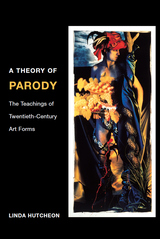 A Theory of Parody: The Teachings of Twentieth-Century Art Forms
Linda Hutcheon
University of Illinois Press, 1985 In this major study of a flexible and multifaceted mode of expression, Linda Hutcheon looks at works of modern literature, visual art, music, film, theater, and architecture to arrive at a comprehensive assessment of what parody is and what it does.
Hutcheon identifies parody as one of the major forms of modern self-reflexivity, one that marks the intersection of invention and critique and offers an important mode of coming to terms with the texts and discourses of the past. Looking at works as diverse as Tom Stoppard's Rosenkrantz and Guildenstern Are Dead, Brian de Palma's Dressed to Kill, Woody Allen's Zelig, Karlheinz Stockhausen's Hymnen, James Joyce's Ulysses, and Magritte's This Is Not a Pipe, Hutcheon discusses the remarkable range of intent in modern parody while distinguishing it from pastiche, burlesque, travesty, and satire. She shows how parody, through ironic playing with multiple conventions, combines creative expression with critical commentary. Its productive-creative approach to tradition results in a modern recoding that establishes difference at the heart of similarity.
In a new introduction, Hutcheon discusses why parody continues to fascinate her and why it is commonly viewed as suspect-–for being either too ideologically shifty or too much of a threat to the ownership of intellectual and creative property.
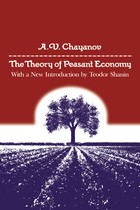 The Theory of Peasant Economy
A. V. Chayanov
University of Wisconsin Press, 1986 The work of A. V. Chayanov is today drawing more attention among Western scholars than ever before. Largely ignored in his native Russia because they differed from Marxist-Leninist theory, and neglected in the West for more than forty years, Chayanov’s sophisticated theories were at last published in English in 1966. That trenchant is reprinted in this Wisconsin paperback edition, which includes a new introduction by the sociologist Teodor Shanin, of the University of Manchester, one of the world’s leading Chayanov scholars. The Wisconsin edition will be essential reading for political scientists, anthropologists, and all whose interests include peasant studies, Third World development, and women’s studies.
"The past two decades have seen the emergence of a whole new field called 'peasant studies' and, along with those of Karl Marx, Chayanov's ideas have been central to its development. . . . The publishers are to be commended for re-issuing the book with both old and new introductions and making it available as an affordable paperback for students. The work is a classic."—Times Higher Education Supplement
A Theory of Price Control: With a New Introduction by the Author
John Kenneth Galbraith
Harvard University Press, 1952 Galbraith supplies the underlying economic ideas that will help readers understand how particular controls affect general operation of the economy. He shows why price controls during World War II worked as well as they did and analyzes the criteria for effective price control both under a fully mobilized economy and under limited mobilization.
Theory of Psychological Scaling
Clyde H. Coombs
University of Michigan Press, 1952 This monograph describes the construction of a psychological theory that defines the information contained in the responses of individuals to stimuli. This has been accomplished by abstracting certain properties of behavior that are invariant over content. These have been classified and quantified in a theory of data that, with the quasi-formal basis hypothesized here, determines the genotypic inferences that may be made from manifest behavior.
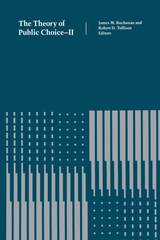 Theory of Public Choice - II
James M. Buchanan and Robert D. Tollison, Editors
University of Michigan Press, 1984 That economics can usefully explain politics is no longer a novel idea, it is a well-established fact brought about by the work of many public choice scholars. This book, which is a sequel to a similar volume published in 1972, brings together a fresh collection of recent work in the public choice tradition. The essays demonstrate the power of the public choice approach in the analysis of government. Among the issues considered are income redistribution, fiscal limitations on government, voting rules and processes, the demand for public goods, the political business cycle, international negotiations, interest groups, and legislators. James M. Buchanan is University Distinguished Professor and direct, Center for Study of Public Choice at George Mason University. Robert D. Tollison, formerly director, Bureau of Economics, Federal Trade Commission, is now Abney Professor of Economics at Clemson University.
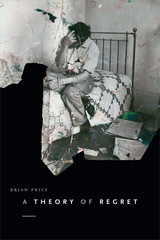 A Theory of Regret
Brian Price
Duke University Press, 2017 In A Theory of Regret Brian Price contends that regret is better understood as an important political emotion than as a form of weakness. Price shows how regret allows us to see that our convictions are more often the products of our perceptual habits than the authentic signs of moral courage that we more regularly take them to be. Regret teaches us to give up our expectations of what we think should or might occur in the future, and also the idea that what we think we should do will always be the right thing to do. Understood instead as a mode of thoughtfulness, regret helps us to clarify our will in relation to the decisions we make within institutional forms of existence. Considering regret in relation to emancipatory theories of thinking, Price shows how the unconditionally transformative nature of this emotion helps us become more sensitive to contingency and allows us, in turn, to recognize the steps we can take toward changing the institutions that shape our lives.
A Theory of Religion
Stark, Rodney
Rutgers University Press, 1996 In this unique text, Stark and Bainbridge begin with basic statements about human nature and, employing the principles of logic and philosophy, build toward increasingly complex propositions about societies and their religious institutions. They provide a rigorous yet flexible sociological theory of religion as well as a general sociological model for deriving macrolevel theory from microlevel evidence.
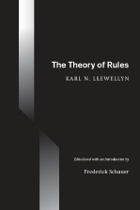 The Theory of Rules
Karl N. Llewellyn
University of Chicago Press, 2011 Karl N. Llewellyn was one of the founders and major figures of legal realism, and his many keen insights have a central place in American law and legal understanding. Key to Llewellyn’s thinking was his conception of rules, put forward in his numerous writings and most famously in his often mischaracterized declaration that they are “pretty playthings.” Previously unpublished, The Theory of Rules is the most cogent presentation of his profound and insightful thinking about the life of rules.
This book frames the development of Llewellyn’s thinking and describes the difference between what rules literally prescribe and what is actually done, with the gap explained by a complex array of practices, conventions, professional skills, and idiosyncrasies, most of which are devoted to achieving a law’s larger purpose rather than merely following the letter of a particular rule. Edited, annotated, and with an extensive analytic introduction by leading contemporary legal scholar Frederick Schauer, this rediscovered work contains material not found elsewhere in Llewellyn’s writings and will prove a valuable contribution to the existing literature on legal realism.
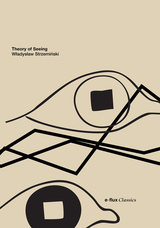 Theory of Seeing
Wladyslaw Strzeminski
University of Minnesota Press, 2025 The first English translation of a radical and influential theory of art by a leader of Poland’s avant-garde
After World War II, socialist realism became the official state doctrine of art in Poland, with abstract works deemed counterrevolutionary and forbidden from public view. Władysław Strzemiński, a leader of the Polish constructivist avant-garde, developed a treatise of visual consciousness as a foundation for progressive art, emphasizing art’s autonomy. His application of Marxist aesthetics to the physiology of seeing is expressed in Theory of Seeing, which was published posthumously in 1958 by his students from notes collected from his lectures. Preceding the comparable perspectives developed by Jacques Rancière, David Hockney, and John Berger, and even the cinema of Jean-Luc Godard, Strzemiński’s Theory of Seeing introduces the radical and groundbreaking ideas of one of Poland’s most important artists to English-speaking audiences for the first time.
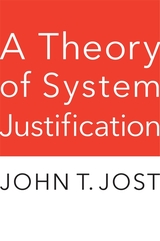 A Theory of System Justification
John T. Jost
Harvard University Press, 2020 A leading psychologist explains why nearly all of us—including many of those who are persecuted and powerless—so often defend the social systems that cause misery and injustice.
Why do we so often defend the very social systems that are responsible for injustice and exploitation? In A Theory of System Justification, John Jost argues that we are motivated to defend the status quo because doing so serves fundamental psychological needs for certainty, security, and social acceptance. We want to feel good not only about ourselves and the groups to which we belong, but also about the overarching social structure in which we live, even when it hurts others and ourselves.
Jost lays out the wide range of evidence for his groundbreaking theory and examines its implications for our communities and our democracy. Drawing on twenty-five years of research, he provides an accessible account of system justification theory and its insights. System justification helps to explain deep contradictions, including the feeling among some women that they don’t deserve the same salaries as men and the tendency of some poor people to vote for policies that increase economic inequality.
The theory illuminates the most pressing social and political issues of our time—why has it been so hard to combat anthropogenic climate change?—as well as some of the most intimate—why do some black children prefer white dolls to black ones and why do some people stay in bad relationships? Jost’s theory has far-reaching implications, and he offers numerous insights that political activists and social justice advocates can use to promote change.
The Theory of the Avant-Garde
Renato Poggioli
Harvard University Press, 1968 Convinced that all aspects of modern culture have been affected by avant-garde art, Renato Poggioli explores the relationship between the avant-garde and civilization. Historical parallels and modern examples from all the arts are used to show how the avant-garde is both symptom and cause of many major extra-aesthetic trends of our time, and that the contemporary avant-garde is the sole and authentic one.
 Theory of the Democratic State
Marie Collins Swabey
Harvard University Press This volume deals with republican logic and those first principles which underlie the practical technique of democracy and its humanitarian ideals. Professor Swabey finds that democratic theory centers in the notion of formal identity and consistency, and that this notion is elaborated quantitatively in the concepts of equality, per capita enumeration, majority representation probabilities, and sampling. Among the subjects she discusses are the new techniques of publicity adopted by radio, screen, and newsprint; the significance of science and modern machinery in relation to government; the import of economic rationalization; and means of guarding against dictatorship. In general, Swabey seeks to make clear how democracy, through the influence of science and the ideas of the Enlightenment, has developed a rational methodology which applies such logical notions as uniformity, consistency, probability, and measurement to the treatment of men by government.
 A Theory of the Firm: Governance, Residual Claims, and Organizational Forms
Michael C. Jensen
Harvard University Press, 2003 This collection examines the forces, both external and internal, that lead corporations to behave efficiently and to create wealth. Corporations vest control rights in shareholders, the author argues, because they are the constituency that bear business risk and therefore have the appropriate incentives to maximize corporate value. Assigning control to any other group would be tantamount to allowing that group to play poker with someone else's money, and would create inefficiencies. The implicit denial of this proposition is the fallacy of the so-called stakeholder theory of the corporation, which argues that corporations should be run in the interests of all stakeholders. This theory offers no account of how conflicts between different stakeholders are to be resolved, and gives managers no principle on which to base decisions, except to follow their own preferences.
In practice, shareholders delegate their control rights to a board of directors, who hire, fire, and set the compensation of the chief officers of the firm. However, because agents have different incentives than the principals they represent, they can destroy corporate value unless closely monitored. This happened in the 1960s and led to hostile takeovers in the market for corporate control in the 1970s and 1980s. The author argues that the takeover movement generated increases in corporate efficiency that exceeded $1.5 trillion and helped to lay the foundation for the great economic boom of the 1990s.
 Theory of the Gimmick: Aesthetic Judgment and Capitalist Form
Sianne Ngai
Harvard University Press, 2020 Christian Gauss Award Shortlist
Winner of the ASAP Book Prize
A Literary Hub Book of the Year
“Makes the case that the gimmick…is of tremendous critical value…Lies somewhere between critical theory and Sontag’s best work.”
—Los Angeles Review of Books
“Ngai exposes capitalism’s tricks in her mind-blowing study of the time- and labor-saving devices we call gimmicks.”
—New Statesman
“One of the most creative humanities scholars working today…My god, it’s so good.”
—Literary Hub
“Ngai is a keen analyst of overlooked or denigrated categories in art and life…Highly original.”
—4Columns
“It is undeniable that part of what makes Ngai’s analyses of aesthetic categories so appealing…is simply her capacity to speak about them brilliantly.”
—Bookforum
“A page turner.”
—American Literary History
Deeply objectionable and yet strangely attractive, the gimmick comes in many guises: a musical hook, a financial strategy, a striptease, a novel of ideas. Above all, acclaimed theorist Sianne Ngai argues, the gimmick strikes us both as working too little (a labor-saving trick) and working too hard (a strained effort to get our attention).
When we call something a gimmick, we register misgivings that suggest broader anxieties about value, money, and time, making the gimmick a hallmark of capitalism. With wit and critical precision, Ngai explores the extravagantly impoverished gimmick across a range of examples: the fiction of Thomas Mann, Helen DeWitt, and Henry James; the video art of Stan Douglas; the theoretical writings of Stanley Cavell and Theodor Adorno. Despite its status as cheap and compromised, the gimmick emerges as a surprisingly powerful tool in this formidable contribution to aesthetic theory.
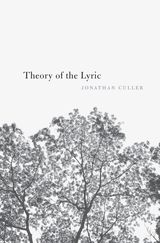 Theory of the Lyric
Jonathan Culler
Harvard University Press, 2015 What sort of thing is a lyric poem? An intense expression of subjective experience? The fictive speech of a specifiable persona? Theory of the Lyric reveals the limitations of these two conceptions of the lyric—the older Romantic model and the modern conception that has come to dominate the study of poetry—both of which neglect what is most striking and compelling in the lyric and falsify the long and rich tradition of the lyric in the West. Jonathan Culler explores alternative conceptions offered by this tradition, such as public discourse made authoritative by its rhythmical structures, and he constructs a more capacious model of the lyric that will help readers appreciate its range of possibilities.
“Theory of the Lyric brings Culler’s own earlier, more scattered interventions together with an eclectic selection from others’ work in service to what he identifies as a dominant need of the critical and pedagogical present: turning readers’ attention to lyric poems as verbal events, not fictions of impersonated speech. His fine, nuanced readings of particular poems and kinds of poems are crucial to his arguments. His observations on the workings of aspects of lyric across multiple different structures are the real strength of the book. It is a work of practical criticism that opens speculative vistas for poetics but always returns to poems.”
—Elizabeth Helsinger, Critical Theory
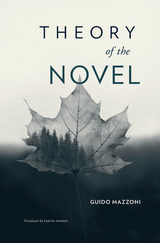 Theory of the Novel
Guido Mazzoni
Harvard University Press, 2017 The novel is the most important form of Western art. It aims to represent the totality of life; it is the flagship that literature sends out against the systematic thought of science and philosophy. Indebted to Lukács and Bakhtin, to Auerbach and Ian Watt, Guido Mazzoni’s Theory of the Novel breaks new ground, building a historical understanding of how the novel became the modern book of life: one of the best representations of our experience of the world.
The genre arose during a long metamorphosis of narrative forms that took place between 1550 and 1800. By the nineteenth century it had come to encompass a corpus of texts distinguished by their freedom from traditional formal boundaries and by the particularity of their narratives. Mazzoni explains that modern novels consist of stories told in any way whatsoever, by narrators who exist—like us—as contingent beings within time and space. They therefore present an interpretation, not a copy, of the world.
Novels grant new importance to the stories of ordinary men and women and allow readers to step into other lives and other versions of truth. As Theory of the Novel makes clear, this art form narrates an epoch and a society in which individual experiences do not converge but proliferate, in which the common world has fragmented into a plurality of small, local worlds, each absolute in its particularity.
 The Theory of Trade and Protection
William Penfield Travis
Harvard University Press How much does a country's commercial policy affect its economic efficiency? How would free trade change the structure of a country’s economy and foreign trade? William Penfield Travis extends the Heckscher-Ohlin trade theory and addresses it to an empirical study of these and related questions. He argues that trade flows fail to reflect relative factor endowments because protection systematically nullifies their effects, and that therefore protection must be incorporated in any positive trade theory.
The author begins by developing a new concept—the equalization region—which he uses to reexamine the assumptions and the logic of the Heckscher-Ohlin theory and of its principal part, the factor-price equalization theorem. This analysis produces a fundamental reinterpretation of Leontief’s scarce-factor paradox, one which justifies Leontief’s work as an empirical test of trade theory under free trade which indicates its necessary modifications under protection. These modifications are then used to show that Leontief in fact measured the effects of American and foreign tariffs and other trade restriction on relative factor prices here and abroad.
To corroborate his theoretical analysis, Travis makes a detailed study of the commercial policies of five main industrial countries; he shows the common structure of protection and its systematic relationship to relative factor endowments. He shows also that protection, by distorting their relative prices, causes considerable substitution of raw materials for labor and capital inputs in manufacturing. The author concludes this important book by indicating some of the new forms which protection is taking throughout the world and by arguing that protection, past and present, is the main force preventing the spread of high living standards to the impoverished areas of the world.
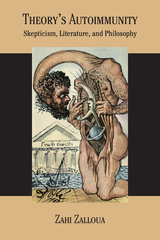 Theory’s Autoimmunity: Skepticism, Literature, and Philosophy
Zahi Zalloua
Northwestern University Press, 2018 Engaging scholars from across humanistic fields grappling with the role and value of theory in our times, Theory's Autoimmunity argues for reclaiming theory's skepticism as a value. To cultivate theory's skeptical impulses is to embrace what Jacques Derrida has termed autoimmunity: a condition of openness to the outside—openness of the self, the community, democracy, or other ideals—that allows for change.
Openness to change comes with risks, and the self-protective temptation to immunize oneself or one's community against these risks is strong. Yet without such risks, without openness to otherness, no encounter with the new, with difference, can ever take place. Without autoimmunity, theory becomes stagnant and programmatic, unable to receive and respond to the other or the event, to address, revise, and produce new meanings.
Taking up the challenge of thinking theory as skepticism, with and against philosophy, this study turns to literature as an interlocutor, investigating the ways theory, like the literary works of Montaigne, Baudelaire, Stendhal, Morrison, or Duras, declines to put on the interpretive brakes, to stop reading at a point of understanding. Undoing and remaking itself, theory—those critical interpretive practices that revel in the creation and proliferation of meaning—becomes autoimmune.
Theoterrorism v. Freedom of Speech: From Incident to Precedent
Paul Cliteur
Amsterdam University Press, 2019 The Rushdie Affair, the Danish Cartoon Affair, the assault on Charlie Hebdo, and the earlier Carrell Affair, are examples of religious fanatics' extreme reactions to religious satire and criticism. Perpetrators of these actions consider themselves as true believers. This book aims to understand their motives by means of the concept of theoterrorism: terrorism grounded in religious zealotry.
 Therapeutic Nations: Healing in an Age of Indigenous Human Rights
Dian Million
University of Arizona Press, 2013 Self-determination is on the agenda of Indigenous peoples all over the world. This analysis by an Indigenous feminist scholar challenges the United Nations–based human rights agendas and colonial theory that until now have shaped Indigenous models of self-determination. Gender inequality and gender violence, Dian Million argues, are critically important elements in the process of self-determination.
Million contends that nation-state relations are influenced by a theory of trauma ascendant with the rise of neoliberalism. Such use of trauma theory regarding human rights corresponds to a therapeutic narrative by Western governments negotiating with Indigenous nations as they seek self-determination.
Focusing on Canada and drawing comparisons with the United States and Australia, Million brings a genealogical understanding of trauma against a historical filter. Illustrating how Indigenous people are positioned differently in Canada, Australia, and the United States in their articulation of trauma, the author particularly addresses the violence against women as a language within a greater politic. The book introduces an Indigenous feminist critique of this violence against the medicalized framework of addressing trauma and looks to the larger goals of decolonization. Noting the influence of humanitarian psychiatry, Million goes on to confront the implications of simply dismissing Indigenous healing and storytelling traditions.
Therapeutic Nations is the first book to demonstrate affect and trauma’s wide-ranging historical origins in an Indigenous setting, offering insights into community healing programs. The author’s theoretical sophistication and original research make the book relevant across a range of disciplines as it challenges key concepts of American Indian and Indigenous studies.
 Therapeutic Revolutions: Medicine, Psychiatry, and American Culture, 1945-1970
Halliwell, Martin
Rutgers University Press, 2014 Therapeutic Revolutions examines the evolving relationship between American medicine, psychiatry, and culture from World War II to the dawn of the 1970s. In this richly layered intellectual history, Martin Halliwell ranges from national politics, public reports, and healthcare debates to the ways in which film, literature, and the mass media provided cultural channels for shaping and challenging preconceptions about health and illness.
Beginning with a discussion of the profound impact of World War II and the Cold War on mental health, Halliwell moves from the influence of work, family, and growing up in the Eisenhower years to the critique of institutional practice and the search for alternative therapeutic communities during the 1960s. Blending a discussion of such influential postwar thinkers as Erich Fromm, William Menninger, Erving Goffman, Erik Erikson, and Herbert Marcuse with perceptive readings of a range of cultural text that illuminate mental health issues--among them Spellbound, Shock Corridor, Revolutionary Road, and I Never Promised You a Rose Garden--this compelling study argues that the postwar therapeutic revolutions closely interlink contrasting discourses of authority and liberation.
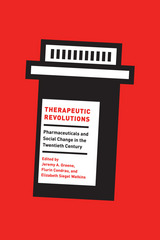 Therapeutic Revolutions: Pharmaceuticals and Social Change in the Twentieth Century
Edited by Jeremy A. Greene, Flurin Condrau, and Elizabeth Siegel Watkins
University of Chicago Press, 2016 When asked to compare the practice of medicine today to that of a hundred years ago, most people will respond with a story of therapeutic revolution: Back then we had few effective remedies, but now we have more (and more powerful) tools to fight disease, from antibiotics to psychotropics to steroids to anticancer agents.
This collection challenges the historical accuracy of this revolutionary narrative and offers instead a more nuanced account of the process of therapeutic innovation and the relationships between the development of medicines and social change. These assembled histories and ethnographies span three continents and use the lived experiences of physicians and patients, consumers and providers, and marketers and regulators to reveal the tensions between universal claims of therapeutic knowledge and the actual ways these claims have been used and understood in specific sites, from postwar West Germany pharmacies to twenty-first century Nigerian street markets. By asking us to rethink a story we thought we knew, Therapeutic Revolutions offers invaluable insights to historians, anthropologists, and social scientists of medicine.
Therapon
Bruce Bond and Dan Beacy-Quick
Tupelo Press, 2023 In Therapon poets Bruce Bond and Dan Beachy-Quick engage in a dialogue of near-sonnets, both personal and cultural, that explore the unfinished, haunted, and unrepresentable nature of selfhood as best suggested and enlarged in gestures of exchange. Inspired by the work of Emmanuel Levinas, this book interrogates not only our ethical relation to others as beyond the pretense of our grasp, but also the notion that otherness inhabits each of us, however individuated and misunderstood, and makes our language possible, unstable, and inexhaustibly resourceful. In this way Therapon finds in dialogue not only its medium but its fascination, a sense of setting forth in friendship, and in friendship the mercies of the strange.
 The Therapy Industry: The Irresistible Rise of the Talking Cure, and Why It Doesn't Work
Paul Moloney
Pluto Press, 2013 Across the world anxiety, stress and depression are on the increase, a trend which looks set to continue as austerity measures bite. The official response tells people that unhappiness is just a personal problem, rather than a social one.
Written by a practising psychologist, with nearly thirty years' experience in the fields of mental health and learning disabilities, The Therapy Industry offers a concise, accessible and critical overview of the world of psychological practice in Britain and the USA. Paul Moloney argues that much therapy is geared towards compliance and acceptance of the status quo, rather than attempting to facilitate social change.
The Therapy Industry fundamentally challenges our conceptions of happiness and wellbeing. Moloney argues that therapeutic and applied psychology have little basis in science, that their benefits are highly exaggerated and they prosper because they serve the interests of power.
Therapy, Spirituality, and East Asian Imaginaries
Ioannis Gaitanidis
Amsterdam University Press, 2025 In the context of modern global exchanges, an imagined and essentialised notion of ‘East Asia’ has served as both a source of inspiration and a catalyst for new connections, extending beyond the geographic boundaries of China, Japan, and Korea. This volume explores the global circulation of practices, technologies, and ideas identified as ‘East Asian’ in alternative therapies and spiritual practices since the 1970s. Case studies range from the incorporation of traditional Chinese medicine into Brazilian naturopathy to self-development seminars promoting Korean national identity. Rather than focusing on questions of authenticity, the book uniquely interrogates how and why the cultures of China, Japan, and Korea have been invoked over the last fifty years to promote specific therapeutic, spiritual, and political agendas worldwide.
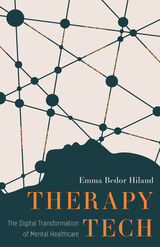 Therapy Tech: The Digital Transformation of Mental Healthcare
Emma Bedor Hiland
University of Minnesota Press, 2021 A pointed look at the state of tech-based mental healthcare and what we must do to change it
Proponents of technology trumpet it as the solution to the massive increase in the mental distress that confronts our nation. They herald the arrival of algorithms, intelligent chatbots, smartphone applications, telemental healthcare services, and more—but are these technological fixes really as good as they seem? In Therapy Tech, Emma Bedor Hiland presents the first comprehensive study of how technology has transformed mental healthcare, showing that this revolution can’t deliver what it promises. Far from providing a solution, technological mental healthcare perpetuates preexisting disparities while relying on the same failed focus on personal responsibility that has let us down before. Through vivid, in-depth case studies, Therapy Tech reveals these problems, covering issues including psychosurveillance on websites like Facebook and 7 Cups of Tea, shortcomings of popular AI “doctors on demand” like Woebot, Wysa, and Joy, and even how therapists are being conscripted into the gig economy. Featuring a vital coda that brings Therapy Tech up to date for the COVID era, this book is the first to give readers a large-scale analysis of mental health technologies and the cultural changes they have enabled. Both a sobering dissection of the current state of mental health and a necessary warning of where things are headed, Therapy Tech makes an important assertion about how to help those in need of mental health services today.
'There Ain't no Black in the Union Jack': The Cultural Politics of Race and Nation
Paul Gilroy
University of Chicago Press, 1991 Gilroy demonstrates the enormous complexity of racial politics in England today. Exploring the relationships among race, class, and nation as they have evolved over the past twenty years, he highlights racist attitudes that transcend the left-right political divide. He challenges current sociological approaches to racism as well as the ethnocentric bias of British cultural studies.
"Gilroy demonstrates effectively that cultural traditions are not static, but develop, grow and indeed mutate, as they influence and are influenced by the other changing traditions around them."—David Edgar, Listener Review of Books.
"A fascinating analysis of the discourses that have accompanied black settlement in Britain. . . . An important addition to the stock of critical works on race and culture."—David Okuefuna, Chicago Tribune
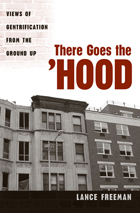 There Goes the Hood: Views of Gentrification from the Ground Up
Lance Freeman
Temple University Press, 2006 In this revealing book, Lance Freeman sets out to answer a seemingly simple question: how does gentrification actually affect residents of neighborhoods in transition? To find out, Freeman does what no scholar before him has done. He interviews the indigenous residents of two predominantly black neighborhoods that are in the process of gentrification: Harlem and Clinton Hill, Brooklyn. By listening closely to what people tell him, he creates a more nuanced picture of the impacts of gentrification on the perceptions, attitudes and behaviors of the people who stay in their neighborhoods. Freeman describes the theoretical and planning/policy implications of his findings, both for New York City and for any gentrifying urban area. There Goes the 'Hood provides a more complete, and complicated, understanding of the gentrification process, highlighting the reactions of long-term residents. It suggests new ways of limiting gentrification's negative effects and of creating more positive experiences for newcomers and natives alike.
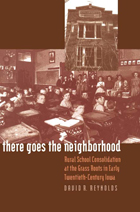 There Goes the Neighborhood: Rural School Consolidation at the Grass Roots in Early Twentieth-Century Iowa
David R. Reynolds
University of Iowa Press, 2002 Despite being the centerpiece of rural educational reform for most of the twentieth century, rural school consolidation has received remarkably little scholarly attention. The social history and geography of the movement, the widespread resistance it provoked, and the cultural landscapes its proponents sought to transform have remained largely unexplored. Now in There Goes the Neighborhood David Reynolds remedies this situation by examining the rural school consolidation movement in that most midwestern of midwestern states, Iowa. From 1912 to 1921, Iowa was the center of national attention as state and local education leaders attempted to implement a new model of rural education, intended to be emulated throughout the rest of the Midwest. As part of the Country Life movement—whose leaders sought to create a more modern future for farm families, an alternative form of rural community that combined the advantages of both city and country—the initially successful model collapsed in the early twenties, not to be revived until after World War II. Reynolds focuses on how and why rural school consolidation was so vigorously resisted in most of Iowa, why it failed in the twenties, and what its lasting consequences have been. Combining social and oral history, modern social theory, historical geography, and ethnography, There Goes the Neighborhood is the most authoritative analysis to date of the politics, geography, and social history of rural school consolidation in any state.
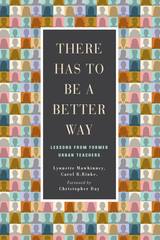 There Has to Be a Better Way: Lessons from Former Urban Teachers
Mawhinney, Lynnette
Rutgers University Press, 2019 Winner of the 2020 American Educational Studies Association Critics Choice Book Award
Teacher attrition has long been a significant challenge within the field of education. It is a commonly-cited statistic that almost fifty percent of beginning teachers leave the field within their first five years, to the detriment of schools, students, and their own career development. There Has to be a Better Way offers an essential voice in understanding the dynamics of teacher attrition from the perspective of the teachers themselves. Drawing upon in-depth qualitative research with former teachers from urban schools in multiple regions of the United States, Lynnette Mawhinney and Carol R. Rinke identify several themes that uncover the rarely-spoken reasons why teachers so often willingly leave the classroom. The authors go further to provide concrete recommendations for how school administrators can better support their practicing teachers, as well as how teacher educators might enhance preparation for the next generation of educators. Complete with suggested readings and discussion questions, this book serves as an indispensable resource in understanding and building an effective and productive educational workforce for our nation’s students.
There I Grew Up: Remembering Abraham Lincoln's Indiana Youth
William E. Bartelt
Indiana Historical Society Press, 2008 In 1859 Abraham Lincoln covered his Indiana years in one paragraph and two sentences of a written autobiographical statement that included the following: "We reached our new home about the time the State came into the union. It was a wild region, with many bears and other wild animals in the woods. There I grew up." William E. Bartelt uses annotation and primary source material to tell the history of Lincoln's Indiana years by those who were there. The book reveals, through the words of those who knew him, Lincoln's humor, compassion, oratorical skills and thirst for knowledge, and it provides an overview of Lincoln's Indiana experiences, his family, the community where the Lincolns settled and southern Indiana from 1816 to 1830.
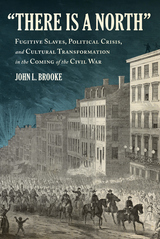 "There Is a North": Fugitive Slaves, Political Crisis, and Cultural Transformation in the Coming of the Civil War
John L. Brooke
University of Massachusetts Press, 2019 How does political change take hold? In the 1850s, politicians and abolitionists despaired, complaining that the "North, the poor timid, mercenary, driveling North" offered no forceful opposition to the power of the slaveholding South. And yet, as John L. Brooke proves, the North did change. Inspired by brave fugitives who escaped slavery and the cultural craze that was Uncle Tom's Cabin, the North rose up to battle slavery, ultimately waging the bloody Civil War.
While Lincoln's alleged quip about the little woman who started the big war has been oft-repeated, scholars have not fully explained the dynamics between politics and culture in the decades leading up to 1861. Rather than simply viewing the events of the 1850s through the lens of party politics, “There Is a North” is the first book to explore how cultural action—including minstrelsy, theater, and popular literature—transformed public opinion and political structures. Taking the North's rallying cry as his title, Brooke shows how the course of history was forever changed.
There Is a Tree More Ancient Than Eden
Leon Forrest
University of Chicago Press, 2001 Leon Forrest, acclaimed author of Divine Days, uses a remarkable verbal intensity to evoke human tragedy, injustice, and spirituality in his writing. As Toni Morrison has said, "All of Forrest's novels explore the complex legacy of Afro-Americans. Like an insistent tide this history . . . swells and recalls America's past. . . . Brooding, hilarious, acerbic and profoundly valued life has no more astute observer than Leon Forrest." All of that is on display here in two novels that give readers a breathtaking view of the human experience, filled with humor and pathos.
 There is No Humor in Heaven: Mark Twain and Religious Liberalism
Dwayne E. Eutsey
University of Missouri Press, 2025 More than a century after his death in 1910, Mark Twain remains a lightning rod for controversy. Especially in matters of race, class, and gender, the volatile views this iconic American author expressed in classics like Adventures of Huckleberry Finn continue to provoke heated debate among antagonistic culture-war factions. However, when citing his withering attacks on religion, believers and atheists alike are often united in concluding that Twain was either a mocking skeptic or a hostile atheist.
In There is No Humor in Heaven, Dwayne Eutsey challenges the persistent view of Twain as a hostile critic of religion by placing him within the prevailing liberal religious ethos of his time. From Hannibal to the western frontier and from Hartford to the wider world, Eutsey contends Twain’s vocation as a humorist was rooted in his frustrated youthful ambition to become a preacher of the Gospel. Throughout his life, his friendships with several influential liberal ministers, each of them espousing various forms of the era’s diverse progressive theology, informed not only Twain’s evolving religious worldview but his lecture performances and literary output.
There is No Humor in Heaven traces unconventional theological influences on Twain ranging from African-American spirituality, Freemasonry, and frontier Unitarianism to devout Liberal Christianity, radical Free Religion, and esoteric Hinduism. Drawing from Twain’s writings, documents, personal notes, and more, There is No Humor in Heaven offers readers a radical re-examination of the spiritually creative vitality of a controversial literary giant.
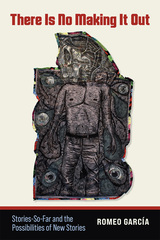 There Is No Making It Out: Stories-So-Far and the Possibilities of New Stories
Romeo García
Utah State University Press, 2025 Through classroom ethnography, student interviews, analyses of settler archives, and personal reflection, There Is No Making It Out addresses the legacies of settler colonialism and settler rhetorics and their continued impact on how (subaltern) peoples see the world, walk through it, and interact with others. Romeo García argues that concepts of decoloniality prompt crucial counter-rhetorics and writing that are necessary but perhaps ultimately unattainable. In the demand for something else, and at the intersection between a praxical theorizing and theory-building actioning, There Is No Making It Out works to de-link and reclaim an archival approach as a critical method and also reclaim a theory of archival impressions as a theoretical apparatus deeply attuned both to tilling the ground on which power takes root and to a full spectrum of Matter (living, nonliving, nonhuman). García offers no definitive resolutions but, situated between two rhetorical standpoints—stories-so-far and the possibilities of new stories—There Is No Making It Out channels a hope and struggle for wor(l)ding otherwise.
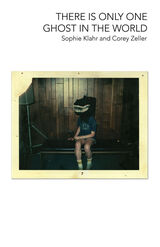 There Is Only One Ghost in the World
Sophie Klahr and Corey Zeller
University of Alabama Press, 2023 One ghost, infinite echoes—where memory, myth, and identity collide. There Is Only One Ghost in the World follows the fragmented meditations of a multilayered voice, an intimate witness to our times that delicately and bluntly reveals the best and the worst in all of us. It is a kaleidoscopic investigation into the loneliness of modern American life as well as family relationships, exploring the truths and lies that families tell one another, and why, with empathy, sorrow, and humility. We travel from the oil-slicked beaches of California and the alleys of New Orleans to the steps of the Capitol. Here: the raw nerves of gender and identity. Here: the lessons of heartbreak. Here: true myths, fake news, and old rumors. Here: the legacies of art and incisors of seasons. Incompletable Venn diagrams, sibling porn stars, addiction and climate change, shootings and stolen x-rays, the lyrics of disco and the taxonomy of slot machines, steel monoliths and 99-cent stores, last meals and unearthed mummies. There Is Only One Ghost in the World is a book about what happened just before you woke up, and what happened just after. And what happened next.
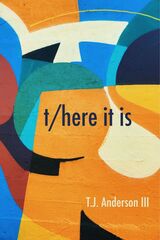 t/here it is
T.J. Anderson III
Omnidawn, 2022 A poetry collection in nine sections that each take on an aspect of memory.
The poems in t/here it is take multiple forms as each section reflects on variations of experience, engaging with the simultaneity of historic and present time while yearning for a future that is beyond what we can envision. In Section I, the poet grapples with ancestral legacy and connection to the natural world. Section II deals with the way one traverses the urban landscape and with various strategies of survival, and Section III recalls the observations and experiences of youth. Through nine linked poems, Section IV complicates the idea of witness under a capitalistic system bent on exploitation and devaluing the sacred human experience. Section V speaks to the lost opportunity of making profound human connections during the race to acquire more material goods. In Section VI, the poems take on the domestic and institutional places that govern our lives. A single poem forms Section VII, mapping the intersection between jazz and emotion. With Section VIII, Anderson pays homage to jazz greats and reflects on the ways that listening can carry one back to moments of growth and lamentation. The two poems that close out the book in Section IX bring the reader to a place of vulnerability, expressing the desire to be able to discern the multiple avenues of one’s journey with awareness.
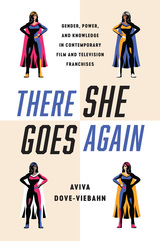 There She Goes Again: Gender, Power, and Knowledge in Contemporary Film and Television Franchises
Aviva Dove-Viebahn
Rutgers University Press, 2024 There She Goes Again interrogates the representation of ostensibly powerful women in transmedia franchises, examining how presumed feminine traits—love, empathy, altruism, diplomacy—are alternately lauded and repudiated as possibilities for effecting long-lasting social change. By questioning how these franchises reimagine their protagonists over time, the book reflects on the role that gendered exceptionalism plays in social and political action, as well as what forms of knowledge and power are presumed distinctly feminine. The franchises explored in this book illustrate the ambivalent (post)feminist representation of women protagonists as uniquely gifted in ways both gendered and seemingly ungendered, and yet inherently bound to expressions of their femininity. At heart,There She Goes Again asks under what terms and in what contexts women protagonists are imagined, envisioned, embodied, and replicated in media. Especially now, in a period of gradually increasing representation, women protagonists demonstrate the importance of considering how we should define—and whether we need—feminine forms of knowledge and power.
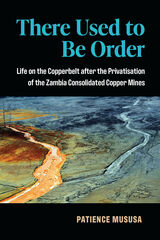 There Used to Be Order: Life on the Copperbelt after the Privatisation of the Zambia Consolidated Copper Mines
Patience Mususa
University of Michigan Press, 2021 In There Used to Be Order, Patience Mususa considers social change in the Copperbelt region of Zambia following the re-privatization of the large state mining conglomerate, the Zambia Consolidated Copper Mines (ZCCM), in the mid-1990s. As the copper mines were Zambia’s most important economic asset, the sale of ZCCM was considered a major loss to the country. More crucially, privatization marked the end of a way of life for mine employees and mining communities. Based on three years of ethnographic field research, this book examines life for those living in difficult economic circumstances, and considers the tension between the life they live and the nature of an “extractive area.” This account, unusual in its examination of middle-income decline in Africa, directs us to think of the Copperbelt not only as an extractive locale for copper whose activities are affected by the market, but also as a place where the residents’ engagement with the harsh reality of losing jobs and struggling to earn a living after the withdrawal of welfare is simultaneously changing both the material and social character of the place. Drawing on phenomenological approaches, the book develops a theoretical model of “trying,” which accounts for both Copperbelt residents’ aspirations and efforts.
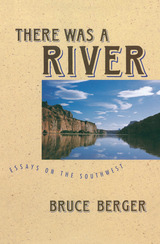 There Was a River
Bruce Berger
University of Arizona Press, 1994
On October 7, 1962, Bruce Berger and three friends embarked on what may have been the last trip taken through the Colorado River's Glen Canyon before the floodgates were closed at Glen Canyon Dam and Lake Powell began to fill. After thirty years, one can grieve for what was lost and then, like Berger, take another look around.
The Southwest Berger sees is an unusual, even odd, place, with inhabitants that are just as strange. In this collection of essays he introduces us to people and places that define a region and a way of life. We meet eccentric desert dwellers like Cactus Pete, who claimed to have mapped the mountains of Venus long before NASA penetrated its clouds. We chart the canals of Phoenix, which have created a Martian landscape out of an irrigation system dating back to the ancient Hohokam; stay at a "wigwam" motel in Holbrook, whose kitsch appeals even to Hopis; and dim our lights for the International Dark-Sky Association's efforts to keep night skies safe for astronomy.
Focusing on the interaction of people with the environment, Berger reveals an original vision of the Southwest that encompasses both city and wilderness. In a concluding essay centering on the sale of his mother's estate in Phoenix, he concedes that "our intention to leave the desert alone has resulted, unwittingly, in loss after loss, simply by our being here." Sometimes there are losses—a canyon, a house—but Berger attunes us to the prodigies of change.
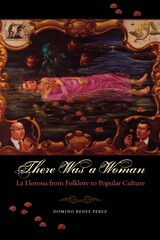 There Was a Woman: La Llorona from Folklore to Popular Culture
By Domino Renee Perez
University of Texas Press, 2008 "How is it that there are so many lloronas?" A haunting figure of Mexican oral and literary traditions, La Llorona permeates the consciousness of her folk community. From a ghost who haunts the riverbank to a murderous mother condemned to wander the earth after killing her own children in an act of revenge or grief, the Weeping Woman has evolved within Chican@ imaginations across centuries, yet no truly comprehensive examination of her impact existed until now. Tracing La Llorona from ancient oral tradition to her appearance in contemporary material culture, There Was a Woman delves into the intriguing transformations of this provocative icon. From La Llorona's roots in legend to the revisions of her story and her exaltation as a symbol of resistance, Domino Renee Perez illuminates her many permutations as seductress, hag, demon, or pitiful woman. Perez draws on more than two hundred artifacts to provide vivid representations of the ways in which these perceived identities are woven from abstract notions—such as morality or nationalism—and from concrete, often misunderstood concepts from advertising to television and literature. The result is a rich and intricate survey of a powerful figure who continues to be reconfigured.
There was an Old Lady
Abner Graboff
Bodleian Library Publishing, 2018 One day an old lady swallows a fly and the only way she can get rid of it is to then swallow a wriggling, tickling spider . . .
For more than a century, this deceptively simple rhyme has delighted children and parents alike. Its galloping rhythm is perfect for reading out loud, becoming a memory game as the list of animals grows—from fly and spider to bird, cat, dog, and goat. Abner Graboff’s bright and startling illustrations combine beautifully with the original verse to bring this subversive, irreverent tale to life.
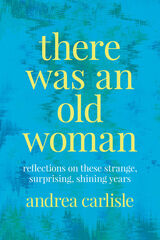 There Was an Old Woman: Reflections on These Strange, Surprising, Shining Years
Andrea Carlisle
Oregon State University Press, 2023 Andrea Carlisle isn’t struggling with her new identity as The Old Woman in the ways society seems to think she should. In fact, she is finding her later years to be an extraordinary and interesting time. In trying to understand the discrepancy, she interrogates the sources of negativity in literature, art, and received wisdom that often lead women to dread this transformative time of life. Given the cultural pervasiveness of ill will toward older women, it is small wonder that growing older is not seen as a natural, even desirable, process. Although some elements of aging are hard to reckon with, there is much to make use of and delight in, along with mysteries, surprises, and revelations.
In these personal essays, Carlisle looks for new ways to bring herself more fully to this time of life, such as daily walks with other women and connecting to the natural world that surrounds her houseboat on an Oregon river at the foot of a forest. She writes about experiences shared with many, if not most, older women: wondering at her body’s transformation, discovering new talents, caregiving, facing loss, tuning in to life patterns and drawing strength through understanding them, letting go (or not) of pieces of the past, and facing other changes large and small. Those curious about, approaching, or living in old age will find wisdom and insight in her unique perspective.
In a voice that rings with clarity, humor, humility, Carlisle shows us that Old Age is not another country where we can expect to find The Old Woman grimly waiting, but is instead an expansion of the borders in the country we’re most familiar with: ourselves.
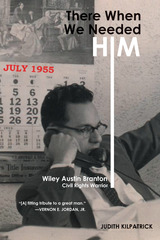 There When We Needed Him: Wiley Austin Branton, Civil Rights Warrior
Judith Kilpatrick
University of Arkansas Press, 2007 Supreme Court Justice Thurgood Marshall said of Wiley Austin Branton that he “devoted his entire life to fighting for his own people.” There When We Needed Him is the story of that fight, which began with Branton's being one of the first black students at the University of Arkansas Law School and which took him to the highest levels of business and government. From his private law practice in Pine Bluff, Arkansas, Branton became, along with Marshall, counsel for the Little Rock Nine in their 1957 efforts to integrate Central High School. Under his leadership of the Atlanta-based Voter Education Project, more than six hundred thousand black voters were registered from 1962 to 1965. He later became executive secretary of President Lyndon Johnson's Council on Equal Opportunity and special assistant to attorneys general Nicholas Katzenbach and Ramsey Clark. He provided leadership to the United Planning Organization, the Alliance for Labor Action, and the NAACP; and he was dean of Howard University Law School. At Branton’s funeral in 1988, former Arkansas senator David Pryor described him as “quiet and unassuming. . . . It is his humility and desire to always put the goals of the civil rights movement before self which probably accounts for the fact that [he] was not more famous than he was.” The influence of this quiet and unassuming man continues to be felt decades later.
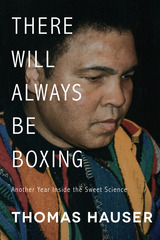 There Will Always Be Boxing: Another Year Inside the Sweet Science
Thomas Hauser
University of Arkansas Press, 2017 In 2016, Booklist observed, “Thomas Hauser is a treasure. Whatever he writes is worth reading. Boxing is blessed that he has focused so much of his career on the sweet science.”
There Will Always Be Boxing continues this tradition of excellence. A poignant look at Muhammad Ali—whose life was celebrated throughout the world following his death on June 3, 2016—highlights this collection of Hauser’s work. The year’s biggest fights are, as always, put in perspective. And once again, Hauser takes readers behind the scenes, giving them a seat at the table with boxing’s biggest power brokers as he reveals the inner workings of the sport and business of boxing.
There Will Always Be Boxing is sure not to disappoint the readers, writers, and critics who look forward to Hauser’s annual collection of articles about the contemporary boxing scene. This collection shows, once again, why Hauser is one of the last real champions of boxing and one of the very best who has ever written about the sport.
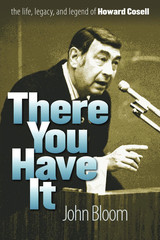 There You Have It: The Life, Legacy, and Legend of Howard Cosell
John Bloom
University of Massachusetts Press, 2010 This is the first full-length biography of the lawyer-turned-sports journalist whose brash style and penchant for social commentary changed the way American sporting events are reported. Perhaps best known for his close relationship with the world champion boxer Muhammad Ali, Howard Cosell became a celebrity in his own right during the 1960s and 1970s-the bombastic, controversial, instantly recognizable sportscaster everyone "loved to hate."
Raised in Brooklyn in a middle-class Jewish family, Cosell carried with him a deeply ingrained sense of social justice. Yet early on he abandoned plans for a legal career to become a pioneer in sports broadcasting, first in radio and then in television. The first white TV reporter to address the former Cassius Clay by his chosen Muslim name, Cosell was also the first sportscaster to conduct locker room interviews with professional athletes, using a tape recorder purchased with his own money. At the 1968 Olympics in Mexico City, he not only defended the fisted "Black Power" salutes of American track medalists John Carlos and Tommie Smith, but he publicly excoriated Olympic Committee chairman Avery Brundage for "hypocritical," racist policies. He was also instrumental in launching ABC's Monday Night Football, a prime-time sports program that evolved into an American cultural institution.
Yet while Cosell took courageous stands on behalf of civil rights and other causes, he could be remarkably blind to the inconsistencies in his own life. In this way, John Bloom argues, he embodied contradictions that still resonate widely in American society today.
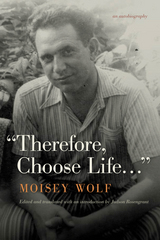 "Therefore, Choose Life...": An Autobiography
Moisey Wolf
Oregon State University Press, 2014 An annotated translation of the extraordinary autobiography of Dr. Moisey Wolf (1922-2007), “Therefore, Choose Life...” is an important addition to the literature of Jewish experience and deepens our understanding of the human condition in the twentieth century.
Wolf describes his Jewish childhood and youth in pre-war Poland, his escape from the Holocaust and subsequent medical service in the Soviet Army during World War II and the following decade, his distinguished career in psychiatry in post-Stalinist Soviet Russia, and his final years in Portland, Oregon, after his departure from the Soviet Union in 1992.
Wolf’s narrative skill and evocative personal insights, combined with Judson Rosengrant’s judicious editing and annotation and elegant translation, provide the reader with direct access to a world that has seemingly ceased to exist, yet continues to resonate and inform our own lives in powerful ways.
“Therefore, Choose Life…” will appeal to readers interested in the history of the East-European twentieth century, pre-Holocaust Jewish family life in Poland, and in the survival of a man of deep religious faith and cultivation in the face of the catastrophes and vicissitudes of his time and place.
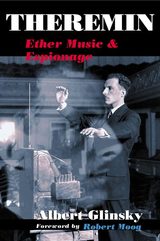 Theremin: Ether Music and Espionage
Albert Glinsky
University of Illinois Press, 2000 A creative genius and prolific inventor, Leon Theremin almost single-handedly launched the field of electronic music in 1920. The theremin--the only musical instrument that is played without being touched--created a sensation worldwide and paved the way for the modern synthesizer. But the otherworldly sound that entranced millions was only part of Theremin's epic life. As a Soviet scientist, Theremin surrendered his life and work to the service of State espionage. On assignment in Depression-era America, he worked the engines of capitalist commerce while passing data on US industrial technology to the Soviet apparat. Following his sudden disappearance in 1938, Theremin vanished into the top-secret Soviet intelligence machine and was presumed dead for nearly thirty years. Using the same technology that spawned the theremin, he designed bugging devices and a host of other electronic wonders, including an early television and multimedia devices that anticipated performance art and virtual reality by decades. Albert Glinsky's biography places the inventor at world events stretching from the Russian Revolution through the Cold War to perestroika. Throughout, he spins whimsy and treachery into an astonishing drama of one man's hidden loyalties, mixed motivations, and irrepressibly creative spirit.
 There's a Bobcat in My Backyard: Living with and Enjoying Urban Wildlife
Jonathan Hanson
University of Arizona Press, 2004 Bobcats in your backyard? Javelinas tromping through your landscaping? Or maybe a packrat has found its way into the vent of your clothes dryer and decided to call it home. . . .
Human residents of the Sonoran Desert are sometimes not completely comfortable when confronted by the wild creatures with whom they share this fragile habitat. But have no fear—please! Not only do these critters mean you no harm, they can also be a source of immense delight.
In this entertaining guidebook, naturalist Jonathan Hanson introduces readers to the satisfaction of attracting and enjoying desert wildlife. Whether your home is deep within the city limits or on what is (currently) the edge of human settlement, you can turn your backyard into a miniature wildlife refuge by providing a simple combination of food, water, and habitat. An appropriately landscaped yard can become a home for a bevy of birds, beasts, and bugs, while even a condo patio can attract colorful hummingbirds and butterflies. Hanson advises you on what kind of birdseed to put out to attract the most interesting avian species, how to tell the difference between rabbits and jackrabbits, and when to worry about roving reptiles—which really isn't all that often. He'll even help you pick out a pair of binoculars to heighten your enjoyment.
Not all desert creatures offer people a positive experience, and Hanson tells how to cope with those that are sometimes considered pests—whether it's the Gila woodpecker announcing its presence on your roof at five in the morning, the rattlesnake slithering unconcerned across your porch, the coyote running amok with a taste for wandering housecats, or the aforementioned woodrat homesteading in a major appliance or car engine. From bears to bees to "creepy crawlies"—scorpions, spiders, and the like—he lets you know when you need to be cautious . . . and when you simply need to give a wild animal its space.
If you live in the desert, you're part of the desert. This book, generously laced with humor and brimming with helpful information, can turn you from a mere bystander into an active participant in an environment in which we all—people and wildlife—must coexist.
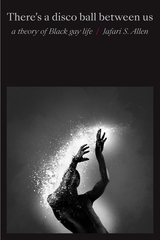 There's a Disco Ball Between Us: A Theory of Black Gay Life
Jafari S. Allen
Duke University Press, 2021 In There’s a Disco Ball Between Us, Jafari S. Allen offers a sweeping and lively ethnographic and intellectual history of what he calls “Black gay habits of mind.” In conversational and lyrical language, Allen locates this sensibility as it emerged from radical Black lesbian activism and writing during the long 1980s. He traverses multiple temporalities and locations, drawing on research and fieldwork conducted across the globe, from Nairobi, London, and Paris to Toronto, Miami, and Trinidad and Tobago. In these locations and archives, Allen traces the genealogies of Black gay politics and cultures in the visual art, poetry, film, Black feminist theory, historiography, and activism of thinkers and artists such as Audre Lorde, Marsha P. Johnson, Essex Hemphill, Colin Robinson, Marlon Riggs, Pat Parker, and Joseph Beam. Throughout, Allen renarrates Black queer history while cultivating a Black gay method of thinking and writing. In so doing, he speaks to the urgent contemporary struggles for social justice while calling on Black studies to pursue scholarship, art, and policy derived from the lived experience and fantasies of Black people throughout the world.
There's a Moose in My Garden: Designing Gardens in Alaska and the Far North
Brenda C. Adams
University of Alaska Press, 2013 What do you do when a young moose calf wants to dine on your freshly planted Lady’s Mantle for lunch? What plants can handle a summer of nearly endless sun? How do you harness the wild beauty of the north for your own backyard? There’s a Moose in My Garden is the first book to tackle these questions and more with practical, user-friendly advice from an award-winning gardener.
Adams provides helpful tips for Far Northern gardeners on how to design and implement successful landscape environments. The book outlines the entire planning and planting process, covering such aspects as handling low-angled sun, soft light, expansive vistas, and a cool climate.
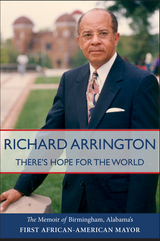 There's Hope for the World: The Memoir of Birmingham, Alabama's First African American Mayor
Richard Arrington
University of Alabama Press, 2008 On a sultry September morning in 1955, a young African American man, the son of share croppers, boarded a Greyhound bus in Birmingham, Alabama, to leave his home state for the first time in his life. He was headed for the University of Detroit on a teaching scholarship from MilesCollege. Richard Arrington could not have guessed then that his future as a teacher would be postponed for decades by big-city politics--and that he would serve a record-setting five terms as chief executive of Alabama’s largest city. Under Arrington’s leadership, Birmingham rebuilt itself from a foundering, steel-driven industrial center to one of the most diversified metropolitan areas in the Southeast, with an economy fueled by health care, biomedical research, engineering, telecommunications, and banking. As mayor, Arrington’s economic legacy is impressive. When he left office, Birmingham boasted a record number of jobs and the lowest unemployment rate in its history. Additionally, Birmingham had built the strongest tax base in Alabama, expanded its city limits by 60 square miles, reduced crime to its lowest level in 25 years, and funded a $260 million school construction program. Today Birmingham is financially sound and is the only city in the Southeast with a $100 million endowment fund.
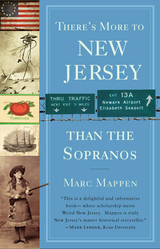 There's More to New Jersey than the Sopranos
Mappen, Marc
Rutgers University Press, 2009 An American tourist in Europe stopped at a restaurant in Gdansk, Poland, and struck up a conversation with a local. "Where do you come from?" he asked. "New Jersey," she said. He smiled and replied, "Ah, Sopranos!" Even fans of that popular show, one that held viewers captive, may be a bit disheartened to discover that the first thing that pops into minds around the world about New Jersey is a dysfunctional crime family, just an exit or two off the infamous N.J. Turnpike. But there's no need to live in fear that the only culture and history that the state is known for is, well, let's say, a bit of bada bing. Actually, the echo of the Big Bangùthe cosmic event that marked the birth of our universe some 13.7 billion years agoùwas first identified by scientists from Bell Labs in Murray Hill, New Jersey. In this lively romp through history from the primitive past to the present day, Marc Mappen's message resonatesùThere's More to New Jersey than the Sopranos. Real tales, wise tales, tall tales abound throughout the pages of Mappen's collection, filled with zest, humor, scandal, and occasionally tragedy. Annie Oakley. Ulysses S. Grant. Benedict Arnold. Ezra Pound. Shoeless Joe Jackson. These luminaries and many others share a common bond with the state that witnessed prehistoric elephants roaming its pastures, the explosion on the USS Princeton, a Martian invasion, famous firsts like the phonograph, electric light, and movies, and, well, step aside Tony Soprano: mobster Al Capone strolling along the Atlantic City boardwalk. Providing a lens into American history through lively prose and more than twenty-five illustrations, There's More to New Jersey than the Sopranos is as much fun as a trip to the Jersey Shore and definitely more rewarding than a night home watching televisionù simply stated, this book is one you can't refuse to read.
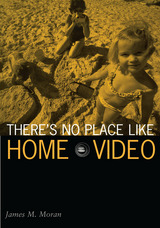 There’s No Place Like Home Video
James M. Moran
University of Minnesota Press, 2002 Defines, examines, and elevates home video to its rightful place From its recording of family events to its influence on filmmaking, home video defies easy categorization and demands serious consideration. In There’s No Place Like Home Video, James Moran takes on this neglected aspect of popular culture. He offers a cultural history of amateur home video, exploring its technological and ideological predecessors, the development of event videography, and its symbiotic relationship with television and film. He also investigates the broader field of video, taking on the question of medium specificity: the attempt to define its unique identity, to capture what constitutes its pure practice. In Moran’s discussion of video, he argues that previous scholars have not sufficiently dealt with its nature as hybrid, varied, and mutable. He argues that such a medium shouldn’t be conceived as pure in and of itself; it is neither autonomous from other media nor entirely dependent on any other, but instead has a chameleonlike interface with films, television, computers, telephones, and even architecture. Rather than look for a grand narrative to define its specificity, Moran places video and home video at the intersections of multiple forms of communication.
 There's Nothing Left for You Here
Allegra Solomon
Four Way Books, 2025 A luminous debut of timely, vibrant stories, There’s Nothing Left for You Here by Allegra Solomon is the winner of the 2023 Kimbilio National Fiction Prize, an honor that celebrates excellence in contemporary fiction from writers of the African diaspora. Ranging in subject but joined by their keen attention to the lives of contemporary young women of color, these stories feature an eclectic cast of characters who are as fascinatingly complex as they are deeply relatable. In these pages, a heartbroken young woman named Salem starts over with her estranged best friend from college (Maida) and moves to LA, where she meets and becomes entangled with Theo, Maida’s mysterious wealthy benefactor; teens Nikita and Alexandria bind together to navigate the adolescent politics of high school and female friendship as the only two Black girls at their school; and Ciara, a bookstore employee, agrees to house-sit for a white coworker named Angelina she hardly knows, only for Angelina to disappear with no notice and leave Ciara looking after her apartment and dog. In the words of Kimbilio Prize judge Deesha Philyaw, readers should prepare to find “these fresh, moody, unconventional stories…irresistible.”
 Therigatha: Poems of the First Buddhist Women
Charles Hallisey
Harvard University Press, 2021 A stunning modern translation of a Buddhist classic that is also one of the oldest literary texts in the world written by women.
The Therīgāthā, composed more than two millennia ago, is an anthology of poems in the Pali language by and about the first Buddhist women. These women were therīs, the senior ones, among ordained Buddhist women, and they bore that epithet because of their religious achievements. The poems they left behind are arguably among the most ancient examples of women’s writing in the world and they are unmatched for their quality of personal expression and the extraordinary insight they offer into the lives of women in the ancient Indian past—and indeed, into the lives of women as such.
This new version of the Therīgāthā, based on a careful reassessment of the major editions of the work and printed in the Roman script common for modern editions of Pali texts, offers the most powerful and the most readable translation ever achieved in English.
Thermal Microwave Radiation: Applications for remote sensing
C. Mätzler
The Institution of Engineering and Technology, 2006 This book combines theoretical concepts with experimental results on thermal microwave radiation to advance the understanding of the complex nature of terrestrial media. With the emphasis on radiative transfer models the book covers the most urgent needs for the transition from the experimental phase of microwave remote sensing to operational applications. All terrestrial aspects are covered from the clear to the cloudy atmosphere, precipitation, ocean and land surfaces, vegetation, snow and ice.
Thermal Power Plant Control and Instrumentation: The control of boilers and HRSGs
David Lindsley
The Institution of Engineering and Technology, 2018 Thermal Power Plant Control and Instrumentation describes the systems and equipment used for measuring and controlling boilers and heat-recovery steam-generators used in land and marine power plant and in process industries. It provides a practical guide to the design, installation, operation and maintenance of these systems. Starting with descriptions of how each area of the plant operates, it shows how the relevant control systems have evolved, how they are implemented in modern systems and how to evaluate the merits of alternative approaches.
Thermal Power Plant Simulation and Control
Damian Flynn
The Institution of Engineering and Technology, 2003 Significant changes over the past decade in computing technology, along with widespread deregulation of electricity industries, have impacted on power plant operations while affording engineers the opportunity to introduce monitoring and plant-wide control schemes that were previously unfeasible. Contributors of world-class excellence are brought together in Thermal Power Plant Simulation and Control to illustrate how current areas of research can be applied to power plant operation, leading to enhanced unit performance, asset management and plant competitiveness through intelligent monitoring and control strategies.
 The Thermal Warriors: Strategies of Insect Survival
Bernd Heinrich
Harvard University Press, 1996 All bodily activity is the result of the interplay of vastly complex physiological processes, and all of these processes depend on temperature. For insects, the struggle to keep body temperature within a suitable range for activity and competition is often a matter of life and death.
A few studies of temperature regulation in butterflies can be found dating back to the late 1800s, but only recently have scientists begun to study the phenomenon in other insects. In The Thermal Warriors Bernd Heinrich explains how, when, and in general what insects regulate their body temperature and what it means to them. As he shows us, the ingenuity of the survival strategies insects have evolved in the irreducible crucible of temperature is astonishing: from shivering and basking, the construction of turrets (certain tiger beetles), and cooling with liquid feces to stilting (some desert ants and beetles), "panting" in grasshoppers and "sweating cicada," and counter- and alternating-currents of blood flow for heat retention and heat loss.
In The Thermal Warriors Heinrich distills his great reference work, The Hot-Blooded Insects, to its essence: the most significant and fascinating stories that illustrate general principles, all conveyed in the always engaging prose we have come to expect from this author.
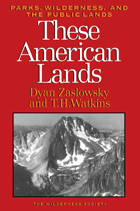 These American Lands: Parks, Wilderness, and the Public Lands: Revised and Expanded Edition
Dyan Zaslowsky and T.H. Watkins
Island Press, 1994 Over 634 million acres of the United States -- nearly a million square miles -- are federally owned. These American Lands is both a history and a celebration of that inheritance. First published in 1986, the book was hailed by Wallace Stegner as "the only indispensable narrative history of the public lands." This completely revised and updated edition is an unsurpassed resource for everyone who cares about, visits, or works with public land in the United States. With over 75 pages of new material, the volume covers: - national parks
- national forests
- national resource lands
- wildlife refuges
- designated wildernesses
- wild and scenic rivers
- Alaska lands
- national trails
Each chapter outlines the history of the unit of public lands under discussion, clarifies the resource use and policy conflicts that are currently besetting it, and provides a detailed agenda of management, expansion, and preservation goals.
These Boys and Their Fathers: A Memoir
Don Waters
University of Iowa Press, 2019 In 2010, Don Waters set out to write a magazine story about a surfing icon who had known his absentee father. It was an attempt to find a way of connecting to a man he never knew. He didn’t imagine that the story would become a years-long quest to understand a man who left behind almost nothing except for a self-absorbed autobiography for his abandoned son.
These Boys and Their Fathers touches on Waters’s early life with his single mother—and her string of dysfunctional men—and his later search for and encounters with his father, but it quickly expands into a gripping account of the life of a 1930s pulp writer, also named Don Waters, with whom Waters becomes obsessed. This wildly original book blends memoir, investigative reporting, and fiction to sort out difficult aspects of family, masculinity, and what it means to be a father.
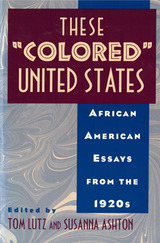 These Colored United States: African American Essays from the 1920s
Lutz, Tom
Rutgers University Press, 1996 "This series of essays from a crucial journal of the Harlem Renaissance epitomizes the diversity of middle-class African American intellectual culture of the 1920s, while the headnotes and introduction deftly articulate the complex social and institutional matrix from which the series emerged."––George Hutchinson, University of Tennessee, author of The Harlem Renaissance in Black and White
Originally published in The Messenger, “the most vibrant and controversial black journal in the nation” at the time, these essays represent an unexamined chapter in African American cultural history and provide a unique overview of social and cultural life during this crucial decade for race relations in the United States. While most scholarly attention on African American culture in the 1920s has focused on life in the major East Coast cities or the South, these essays are written by a highly diverse, eclectic group of African American writers from thirty different states, charged with assessing African American life in their home state. Socialists and pro-business writers, cultural nationalists and assimilationists, fiction writers, sociologists, theater critics, representatives of the New Negro group, the NAACP, and the union movement, and a series of idiosyncratic, nonaligned writers help give a full sense of the diversity of African American intellectual and cultural life in the 1920s.
Amont the essayists are Anita Scott Coleman, WIlliam H. Ferris, Alice Dunbar-Nelson, Charles S. Johnson, E. Franklin Frazier, Theophilus Lewis, Wallace Thurman, Roy Wilkins, George Schuyler, and Mamie Elaine Francis. The focus on the actual lived experience of African Americans across the nation provides copious materials for cultural study unavailable in any other collection.
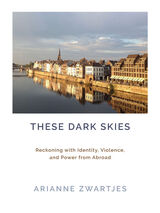 These Dark Skies: Reckoning with Identity, Violence, and Power from Abroad
Arianne Zwartjes
University of Iowa Press, 2022 In These Dark Skies, Arianne Zwartjes interweaves the experience of living in the southern Netherlands—with her wife, who is Russian—and the unfolding of both the refugee crisis across Europe and the uptick in terrorist acts in France, Greece, Austria, Germany, and the Balkans. She probes her own subjectivity, as a white American, as a queer woman in a transcultural marriage, as a writer, and as a witness.
The essays investigate and meditate on a broad array of related topics, including drone strikes, tear gas, and military intervention; the sugar trade, the Dutch blackface celebration of Zwarte Piet, and constructions of whiteness in Europe and the U.S.; and visual arts of Russian avant-garde painters, an Iraqi choreographer living in Belgium, and German choreographer Pina Bausch.
This is a lyrical, timely book deeply salient to the political moment we continue to find ourselves in: a moment of incredible anti-refugee and anti-immigrant sentiment, a moment of xenophobic and misogynistic violence.
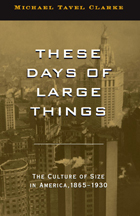 These Days of Large Things: The Culture of Size in America, 1865-1930
Michael Tavel Clarke
University of Michigan Press, 2009 The United States at the turn of the twentieth century cultivated a passion for big. It witnessed the emergence of large-scale corporate capitalism; the beginnings of American imperialism on a global stage; record-level immigration; a rapid expansion of cities; and colossal events and structures like world's fairs, amusement parks, department stores, and skyscrapers. Size began to play a key role in American identity. During this period, bigness signaled American progress. These Days of Large Things explores the centrality of size to American culture and national identity and the preoccupation with physical stature that pervaded American thought. Clarke examines the role that body size played in racial theory and the ways in which economic changes in the nation generated conflicting attitudes toward growth and bigness. Finally, Clarke investigates the relationship between stature and gender. These Days of Large Things brings together a remarkable range of cultural material including scientific studies, photographs, novels, cartoons, architecture, and film. As a general cultural and intellectual history of the period, this work will be of interest to students and scholars in American studies, U.S. history, American literature, and gender studies. Michael Tavel Clarke is Assistant Professor of English at the University of Calgary. Cover photograph: "New York from Its Pinnacles," Alvin Langdon Coburn (1912). Courtesy of the George Eastman House. "A fascinating study of the American preoccupation with physical size, this book charts new paths in the history of science, culture, and the body. A must-read for anyone puzzling over why Americans today love hulking SUVs, Mcmansions, and outsized masculine bodies."
---Lois Banner, University of Southern California "From the Gilded Age through the Twenties, Clarke shows a nation-state obsessed with sheer size, ranging from the mammoth labor union to the 'Giant Incorporated Body' of the monopoly trust. These Days of Large Things links the towering Gibson Girl with the skyscraper, the pediatric regimen with stereotypes of the Jew. Spanning anthropology, medicine, architecture, business, and labor history, Clarke provides the full anatomy of imperial America and offers a model of cultural studies at its very best."
---Cecelia Tichi, Vanderbilt University
These Granite Islands: A Novel
Sarah Stonich
University of Minnesota Press, 2013
These Granite Islands is an arresting novel about a woman who, on her deathbed, recalls the haunting and fateful summer of 1936, a summer that forever changed her life. Sarah Stonich’s debut novel, set on the Iron Range of Minnesota, is an intimate and gripping story of a friendship, a portrait of marriage, and a meditation on the tragedy of loss.
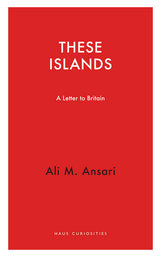 These Islands: A Letter to Britain
Ali M. Ansari
Haus Publishing, 2018 Following Brexit and the earlier referendum on Scottish independence, the debate about British identity has been given recent new prominence. Historically conceived to integrate conflicting nationalisms in an “ever more perfect union,” Britain has lately succumbed to particular resurgent nationalisms in a curious reversal of fortune.
With These Islands, Ali M. Ansari considers the idea of Britain as a political entity. This idea of Britain considers some nationalists as suppressed minorities in need of attention, and others as bigoted throwbacks to a more divisive age. Arguing the case for Great Britain from the perspective of the political mythology of the British state—with an emphasis on culture, ideas and narrative constructions—Ansari makes the claim that Britain’s strength lies in its ability to shape the popular imagination, both at home and abroad. He concludes that an “excess of enthusiasm” may yet do untold damage to the fabric of a state and society that has been carefully constructed over the centuries and may not be easily repaired.
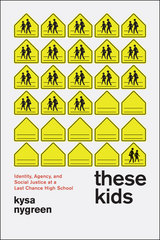 These Kids: Identity, Agency, and Social Justice at a Last Chance High School
Kysa Nygreen
University of Chicago Press, 2013 Few would deny that getting ahead is a legitimate goal of learning, but the phrase implies a cruel hierarchy: a student does not simply get ahead, but gets ahead of others. In These Kids, Kysa Nygreen turns a critical eye on this paradox. Offering the voices and viewpoints of students at a “last chance” high school in California, she tells the story of students who have, in fact, been left behind. Detailing a youth-led participatory action research project that she coordinated, Nygreen uncovers deep barriers to educational success that are embedded within educational discourse itself. Struggling students internalize descriptions of themselves as “at risk,” “low achieving,” or “troubled”—and by adopting the very language of educators, they also adopt its constraints and presumption of failure. Showing how current educational discourse does not, ultimately, provide an adequate vision of change for students at the bottom of the educational hierarchy, she levies a powerful argument that social justice in education is impossible today precisely because of how we talk about it.
These Many Rooms
Laure-Anne Bosselaar
Four Way Books, 2019 With the speaker of Bosselaar’s poems, we move through dark rooms of grief, finding our way into the light of quiet solitude.
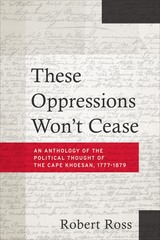 These Oppressions Won’t Cease: An Anthology of the Political Thought of the Cape Khoesan, 1777-1879
Robert Ross
University of Cincinnati Press, 2018 The Khoesan were the first people in Africa to undergo the rigors of European colonization. By the early nineteenth century, they had largely been brought under colonial rule, dispossessed of their land and stock, and forced to work as laborers for farmers of European descent. Nevertheless, a portion of them were able to regain a degree of freedom and maintain their independence by taking refuge in the mission stations of the Western and Eastern Cape, most notably in the Kat River valley. Through petitions, speeches at meetings, letters to the newspapers and correspondence between themselves, the Cape Khoesan articulated a continuous critique of the oppressions of colonialism, always stressing the need for equality before the law, as well as their opposition to attempts to limit their freedom of movement through vagrancy legislation and related measures. This was accompanied by a well-grounded distrust of the British settlers in the Eastern Cape and a concomitant hope, rarely realized, in the benevolence of the British government in London. Comprising 98 texts, These Oppressions Won’t Cease – was an utterance expressed by Willem Uithaalder, commander of Khoe rebel forces in the war of 1850-53 – contains the essential documents of Khoesan political thought in the nineteenth century.
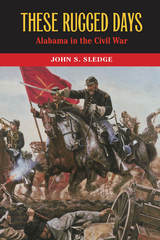 These Rugged Days: Alabama in the Civil War
John S. Sledge
University of Alabama Press, 2017 I couldn’t stop reading it! Bravo!” —Ken Burns, Emmy Award-winning producer and director of The Civil War
In These Rugged Days: Alabama in the Civil War, John S. Sledge offers a riveting and readable account of Alabama’s Civil War saga. Focused on the conflict’s turning points within the state’s borders, Sledge recounts residents’ experiences from secession’s early days to its tumultuous collapse, when 75,000 blue-coated soldiers were on the move statewide. Sledge brings these tumultuous years to life in an impressive array of primary and secondary sources, including official records, diaries, newspapers, memoirs, correspondence, sketches, and photographs. He also highlights such colorful personalities as John Pelham, the youthful Jacksonville artillerist who was shipped home in an iron casket with a glass faceplate; Gus Askew, a nine-year-old Barbour County slave who vividly recalled the day the Yankees marched in; Augusta Jane Evans, the Mobile novelist who was given a gold pen by a daring blockade runner; and Emma Sansom, a plucky Gadsden teenager who acted as a scout and guide to Nathan Bedford Forrest.
These Rugged Days is an enthralling tale of action, courage, pride, and tragedy. The Civil War has left indelible marks on Alabama’s land, culture, economy, and people, and Sledge offers a refreshing take on the state's role in the conflict. His narrative is a dramatic account that will be enjoyed by lay readers as well as students and scholars of Alabama and the Civil War.
 These Survivals: Autobiography of an Extinction
Lynne Huffer
Duke University Press, 2025 A collage-style work in fragments, Lynne Huffer’s These Survivals brings together philosophy, memoir, poetry, and original multimedia artworks to articulate an ethics of living on a devastated planet. Focusing on climate change and mass species extinction, Huffer approaches ruination through assemblages rendered in sharp-edged prose, vibrant color images, and experimental features that include black-out poems, weather reports, and abecedarian essays. She considers her struggles with everyday life and confronts the immensity of extinction across the expanse of geological time, recognizing the self’s insignificance in the context of the planet’s 4.5-billion-year existence. As she moves across autobiographical, political, and literary registers, her abiding theme is the repeated phrase: the fragment remains while the whole crumbles. At every turn, Huffer insists on the fragmentary, provisional nature of anything taken to be whole as well as the impartial conditions under which we write, at times experienced as constraint and at others, freedom. Reveling in interruption, obliquity, and layering, Huffer opens space for thought to emerge in unexpected and innovative ways—ways that are grounded in the material practices of writing and living.
 These "Thin Partitions": Bridging the Growing Divide between Cultural Anthropology and Archaeology
Joshua Englehardt
University Press of Colorado, 2016 These “Thin Partitions” explores the intellectual and methodological differences that separate two of the four subdisciplines within the field of anthropology: archaeology and cultural anthropology. Contributors examine the theoretical underpinnings of this separation and explore what can be gained by joining them, both in university departments and in field research.
In case studies highlighting the benefits of interdisciplinary collaboration, contributors argue that anthropologists and archaeologists are simply not “speaking the same language” and that the division between fields undermines the field of anthropology as a whole. Scholars must bridge this gap and find ways to engage in interdisciplinary collaboration to promote the health of the anthropological discipline. By sharing data, methods, and ideas, archaeology and cultural anthropology can not only engage in more productive debates but also make research accessible to those outside academia.
These “Thin Partitions” gets to the heart of a well-known problem in the field of anthropology and contributes to the ongoing debate by providing concrete examples of how interdisciplinary collaboration can enhance the outcomes of anthropological research.
Contributors: Fredrik Fahlander, Lilia Fernández Souza, Kent Fowler, Donna Goldstein, Joseph R. Hellweg, Derek Johnson, Ashley Kistler, Vincent M. LaMotta, John Monaghan, William A. Parkinson, Paul Shankman, David Small
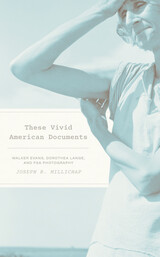 These Vivid American Documents: Walker Evans, Dorothea Lange, and FSA Photobooks
Joseph R. Millichap
University of Tennessee Press, 2024
The story behind the most iconic American photobooks of the twentieth century.
In the late 1930s and early 1940s, the Farm Security Administration (FSA) funded a now-famous photography project to document and highlight American rural life and its economic challenges. In time, the project launched a genre of works that incorporated photographic evidence and artistic documentation of rural poverty, highlighting the struggles and resilience of the American people during this period. Nearly a century later, these photographs have become largely synonymous with the Great Depression.
In These Vivid American Documents, Joseph R. Millichap presents an illuminating examination of four photobooks born of this FSA project: Archibald MacLeish and Dorothea Lange’s Land of the Free; Walker Evans and Lincoln Kirstein’s American Photographs; Dorothea Lange and Paul Taylor’s An American Exodus; and James Agee and Walker Evans’s Let Us Now Praise Famous Men. Millichap includes in his analysis a curated selection of thirty-two photographs from these four photobooks, showcasing the realities of the social, individual, political, artistic, and economic aspects of that time.
Through Millichap’s thorough and insightful study, readers will gain a deeper understanding of the significant cultural and historical impact of this photographic project. Examining what are now historical American icons, like Walker Evans’s portrait of Allie Mae Burroughs and Dorothea Lange’s Migrant Mother, Millichap leans into the intersections, tensions, and meanings that this particular era and medium encapsulate. His close comparison of the documentary and artistic purposes of the photobooks both analyzes how they balance text and imagery and offers a thoughtful study of the photographers and writers who produced them. These Vivid American Documents is an illuminating volume for scholars and general readers alike.
These We Teach: A Study of General College Students
Cornelia T. Williams
University of Minnesota Press, 1943
These We Teach was first published in 1943. Minnesota Archive Editions uses digital technology to make long-unavailable books once again accessible, and are published unaltered from the original University of Minnesota Press editions.
These Words: Poetic Midrash on the Language of Torah
Alden Solovy
Central Conference of American Rabbis, 2023 In These Words, liturgist Alden Solovy distills the Torah into its very essence: the individual words it contains. Echoing the midrash that the Torah has seventy faces, Solovy selects seventy of its Hebrew words that are pregnant with meaning. For each word, he delves into the etymology, translation, and usage, providing deeper insights into familiar texts. Then Solovy presents a beautiful poem—what he calls “poetic midrash”—inspired by and interpreting each word. From b’reishit (“in beginning”) to shamayim (“heavens”) to zachor (“remember”), These Words will change the way you look at the language of the Torah.
These Worn Bodies: Flash Fiction
Avitus B. Carle
Moon City, 2024 In this richly imagined and unconventionally told debut collection, Avitus B. Carle turns tradition on its head, discarding and reframing antiquated portraits of women and girls as damsels, princesses, and homemakers relegated to lives of cleaning and baking and waiting in towers to be rescued or to receive a truly forced first kiss. Instead, Carle’s characters face the world head-on in unique, bold, and unexpected ways.
Theses Completed 2016: Historical research for higher degrees in the United Kingdom and the Republic of Ireland list no. 78 part 1
Compiled by Lauren De'Ath and Emily Morrell
University of London Press, 2017 • Lists over 100 theses on historical topics completed during 2016 in UK and Irish universities • Includes not only history departments, but other departments where historical subjects might be taught • Gives full details of title, supervisor and university • Provides a subject index to aid searching, together with indexes of universities and authors The online version of Theses Completed is published on the IHR’s website (www.history.ac.uk), where searches can be conducted by type of history, geographical area or period.
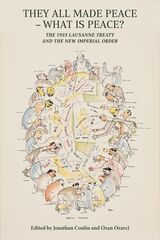 They All Made Peace—What Is Peace?: The 1923 Lausanne Treaty and the New Imperial Order
Edited by Jonathan Conlin and Ozan Ozavci
Gingko, 2023 An analysis of the 1923 Treaty of Lausanne from multiple historical, economic, and social perspectives.
The last of the post-World War One peace settlements, the 1923 Treaty of Lausanne departed from methods used in the Treaty of Versailles and took on a new peace-making initiative: a forced population exchange that affected one and a half million people. Like its German and Austro-Hungarian allies, the defeated Ottoman Empire had initially been presented with a dictated peace in 1920. In just two years, however, the Kemalist insurgency enabled Turkey to become the first sovereign state in the Middle East, while the Greeks, Armenians, Arabs, Egyptians, Kurds, and other communities previously under the Ottoman Empire sought their own forms of sovereignty.
Featuring historical analysis from multiple perspectives, They All Made Peace, What Is Peace? considers the Lausanne Treaty and its legacy. Chapters investigate British, Turkish, and Soviet designs in the post-Ottoman world, situate the population exchanges relative to other peacemaking efforts, and discuss the economic factors behind the reallocation of Ottoman debt and the management of refugee flows. Further chapters examine Kurdish, Arab, Iranian, Armenian, and other communities that were refused formal accreditation at Lausanne, but which were still forced to live with the consequences, consequences that are still emerging, one hundred years on.
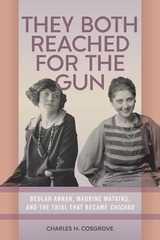 They Both Reached for the Gun: Beulah Annan, Maurine Watkins, and the Trial That Became Chicago
Charles H. Cosgrove
Southern Illinois University Press, 2024 Honorable Mention, 2025 Society of Midland Authors Award in History!
Examining the case that inspired a pop culture phenomenon In 1924 Beulah Annan was arrested and incarcerated for killing her lover, Harry Kalsted. Six weeks later, a jury acquitted her of murder. Inspired by the sordid event, trial, and acquittal, Maurine Watkins, a reporter at the time, wrote the play Chicago, a Broadway hit that was adapted several times. Through a fresh retelling of the story of Annan and of Watkins’s play, Charles H. Cosgrove provides the first critical examination of the criminal case, and an initial exploration of the era’s social assumptions that made the message of the play so plausible in its own time. His careful historical research challenges the received portrait of Annan as a killer who got away with murder, and of Watkins as a savvy cub reporter and precocious playwright.
In They Both Reached for the Gun, Charles H. Cosgrove expertly combines inquest and police records, and interviews with Annan’s relatives, to analyze the participants, the trial, and the subsequent play. Although no one will ever know what really happened in the Kenwood apartment on Chicago’s south side one hundred years ago, Cosgrove’s interrogation shows how sensationalized Watkins’s writing was. Her reporting on the Annan case perpetuated falsehoods about Annan’s so-called “confession,” and her play gave an inaccurate portrayal of Chicago’s criminal justice system. Despite Watkins’s insistence that her drama revealed the truth about its subjects without any exaggeration, her play depicted police, prosecutors, and judges as the only “good guys” in the story, ignoring those who lied, misled, and used brutal methods to obtain forced confessions.
THEY BROKE THE PRAIRIE
Earnest Elmo Calkins
University of Illinois Press, 1989 First published in 1937 in honor of
the Galesburg and Knox College Centenary, the book contains a wealth of
lively details and amusing anecdotes. Calkins traces the progress of the
community and the college through the arrival of the railroad, slave running,
abolitionist confrontations, the Lincoln-Douglas debates, the Civil War,
and the postwar era.
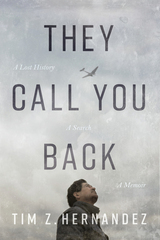 They Call You Back: A Lost History, A Search, A Memoir
Tim Z. Hernandez
University of Arizona Press, 2024 A haunting, an obsession, a calling: Tim Z. Hernandez has been searching for people his whole life. Now, in this highly anticipated memoir, he takes us along on an investigative odyssey through personal and collective history to uncover the surprising conjunctions that bind our stories together.
Hernandez’s mission to find the families of the twenty-eight Mexicans who were killed in the 1948 plane wreck at Los Gatos Canyon formed the basis for his acclaimed documentary novel All They Will Call You, which the San Francisco Chronicle dubbed “a stunning piece of investigative journalism,” and the New York Times hailed as “painstaking detective work by a writer who is the descendant of farmworkers.”
In this riveting new work, Hernandez continues his search for the plane crash victims while also turning the lens on himself and his ancestral past, revealing the tumultuous and deeply intimate experiences that have fueled his investigations—a lifelong journey haunted by memory, addiction, generational trauma, and the spirit world.
They Call You Back is the true chronicle of one man’s obsession to restore dignity to an undignified chapter in America’s past, while at the same time making a case for why we must heal our personal wounds if we are ever to heal our political ones.
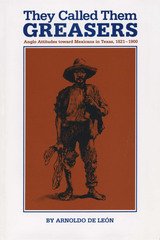 They Called Them Greasers: Anglo Attitudes toward Mexicans in Texas, 1821–1900
by Arnoldo De León
University of Texas Press, 1983 Tension between Anglos and Tejanos has existed in the Lone Star State since the earliest settlements. Such antagonism has produced friction between the two peoples, and whites have expressed their hostility toward Mexican Americans unabashedly and at times violently. This seminal work in the historical literature of race relations in Texas examines the attitudes of whites toward Mexicans in nineteenth-century Texas. For some, it will be disturbing reading. But its unpleasant revelations are based on extensive and thoughtful research into Texas' past. The result is important reading not merely for historians but for all who are concerned with the history of ethnic relations in our state. They Called Them Greasers argues forcefully that many who have written about Texas's past—including such luminaries as Walter Prescott Webb, Eugene C. Barker, and Rupert N. Richardson—have exhibited, in fact and interpretation, both deficiencies of research and detectable bias when their work has dealt with Anglo-Mexican relations. De León asserts that these historians overlooled an austere Anglo moral code which saw the morality of Tejanos as "defective" and that they described without censure a society that permitted traditional violence to continue because that violence allowed Anglos to keep ethnic minorities "in their place." De León's approach is psychohistorical. Many Anglos in nineteenth-century Texas saw Tejanos as lazy, lewd, un-American, subhuman. In De León's view, these attitudes were the product of a conviction that dark-skinned people were racially and culturally inferior, of a desire to see in others qualities that Anglos preferred not to see in themselves, and of a need to associate Mexicans with disorder so as to justify their continued subjugation.
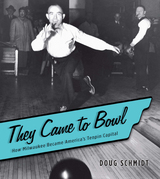 They Came to Bowl: How Milwaukee Became America’s Tenpin Capital
Doug Schmidt
Wisconsin Historical Society Press, 2007
A frozen rope. A urethane split on the drives. Chicken tracks on the telescore.* Do you know your bowling lingo? You will along with much more when you read They Came to Bowl: How Milwaukee Became America's Tenpin Capital. From the thrill of the perfect strike to the agony of a ball gone astray, anyone who has rolled a ball down the lanes will find themselves or someone they know in the people, places and stories covered in this book.
In this authoritative and lively book, Doug Schmidt traces bowling's roots from a German religious rite centuries ago to the sport that made Milwaukee famous. From the taverns and saloons that housed recreational games to the sell-out crowds and million-dollar beer sponsorships of televised tournaments, this well-illustrated book covers both sport and city, charting the changing face of bowling over the century. Packed with memorable showdowns and improbable heroes, They Came to Bowl will take you back to the changing lanes of bowling in Milwaukee — and the sport as a whole.
* frozen rope=a ball rolled with excessive speed almost straight to the pocket; urethane split=2-8-10 or 3-7-9 split caused by sharp breaking point of reactive resin balls; drives=alleys; chicken tracks=string of strikes
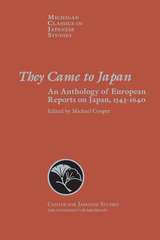 They Came to Japan: An Anthology of European Reports on Japan, 1543-1640
Michael Cooper, Editor
University of Michigan Press, 1995 The Japan accidentally discovered by the Europeans in 1543 was a country torn by internecene wars waged by independent barons who recognised no effective central government and were free to appropriate as many neighbouring fiefs as force of arms and treachery would permit. The Japan which deported the Europeans a century later was a stable, highly centralised bureaucracy under the firm control of a usurping family which was to continue to rule the country until well into the Victorian age. Europeans living in Japan at the time have not only recorded the events of this fascinating period but also provided a picture of sixteenth- and seventeenth-century Japanese life. Apart from a few lacunae, a remarkably full description of the country in this century—its history, people, traditions, culture, and religion—can be pieced together. They Came to Japan collects and translates excerpts from more than thirty early European accounts of Japan, many previously unpublished and extremely rare. Arranged into thematic chapters on aspects of Japanese society, these commentaries are most interesting not for what they say about the Japan but about the European writers themselves. Their attitude towards the newly discovered country and its inhabitants is clearly reflected in their letters and reports, especially when implicit comparisons are made between Japan and Europe. During the course of their discovery of the East, the Europeans had generally adopted the role of representatives of a superior race. They had taken for granted that Europe was synonymous with the civilised world, and thus the discovery of the highly developed Japanese culture and civilisation, which had grown up quite independently of Europe, came as a salutary shock. Because they could not aggressively assert themselves by force of arms in such a remote place, as was their norm, this was to be the first confrontation between East and West on equal terms.
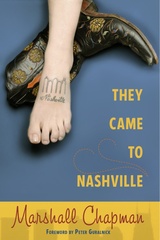 They Came to Nashville
Marshall Chapman
Vanderbilt University Press, 2010 Marshall Chapman knows Nashville. A musician, songwriter, and author with nearly a dozen albums and a bestselling memoir under her belt, Chapman has lived and breathed Music City for over forty years. Her friendships with those who helped make Nashville one of the major forces in American music culture is unsurpassed. And in her new book, They Came to Nashville, the reader is invited to see Marshall Chapman as never before--as music journalist extraordinaire.
In They Came to Nashville, Chapman records the personal stories of musicians shaping the modern history of music in Nashville, from the mouths of the musicians themselves. The trials, tribulations, and evolution of Music City are on display, as she sits down with influential figures like Kris Kristofferson, Emmylou Harris, and Miranda Lambert, and a dozen other top names, to record what brought each of them to Nashville and what inspired them to persevere. The book culminates in a hilarious and heroic attempt to find enough free time with Willie Nelson to get a proper interview. Instead, she's brought along on his raucous 2008 tour and winds up onstage in Beaumont, Texas singing "Good-Hearted Woman" with Willie.
They Came to Nashville reveals the daily struggle facing newcomers to the music business, and the promise awaiting those willing to fight for the dream.
Co-published with the Country Music Foundation Press
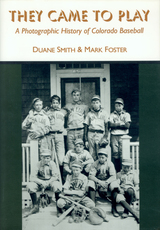 They Came to Play: A Photographic History of Colorado Baseball
Duane A. Smith
University Press of Colorado, 2012 Over one hundred and thirty years ago, pioneers arriving in Colorado during the Civil War era brought the game of baseball to the high and dry Rocky Mountains frontier. From the days of games in pastures with no gloves to the high drama of Coors Field and the Colorado Rockies, baseball and Coloradans have had a love affair that has continued to flourish over the decades. In They Came To Play: A Photographic History of Colorado Baseball, historians and avid baseball fans Duane Smith and Mark Foster have collected the finest historic baseball photographs of teams, players, and games from around the state. They are all here, the town teams, company teams, early professional clubs, and the ethnic teams that made baseball an integral part of the life and times in Colorado's mountain towns, prairie hamlets, and bustling frontier cities. Combined with the wonderful photographs and captions is an essay that brings baseball's rich heritage in Colorado to life for the reader.
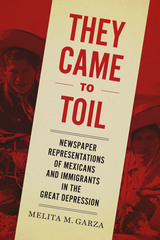 They Came to Toil: Newspaper Representations of Mexicans and Immigrants in the Great Depression
By Melita M. Garza
University of Texas Press, 2018 As the Great Depression gripped the United States in the early 1930s, the Hoover administration sought to preserve jobs for Anglo-Americans by targeting Mexicans, including long-time residents and even US citizens, for deportation. Mexicans comprised more than 46 percent of all people deported between 1930 and 1939, despite being only 1 percent of the US population. In all, about half a million people of Mexican descent were deported to Mexico, a “homeland” many of them had never seen, or returned voluntarily in fear of deportation. They Came to Toil investigates how the news reporting of this episode in immigration history created frames for representing Mexicans and immigrants that persist to the present. Melita M. Garza sets the story in San Antonio, a city central to the formation of Mexican American identity, and contrasts how the city’s three daily newspapers covered the forced deportations of Mexicans. She shows that the Spanish-language La Prensa not surprisingly provided the fullest and most sympathetic coverage of immigration issues, while the locally owned San Antonio Express and the Hearst chain-owned San Antonio Light varied between supporting Mexican labor and demonizing it. Garza analyzes how these media narratives, particularly in the English-language press, contributed to the racial “othering” of Mexicans and Mexican Americans. Adding an important new chapter to the history of the Long Civil Rights Movement, They Came to Toil brings needed historical context to immigration issues that dominate today’s headlines.
They Came to Wisconsin
Julia Pferdehirt
Wisconsin Historical Society Press, 2002
They Came to Wisconsin presents three themes of the state’s immigrant history: leaving the homeland, making the journey, and enduring the first year of settlement. Journal and diary entries and letters from European groups and oral histories from African American, Latino, Hmong, and Amish sources make this book dynamic and wholly inclusive. They Came to Wisconsin breaks fresh ground in presenting document-centered Wisconsin history to a young audience. More important, these firsthand stories add a real human dimension to history, helping students to compare the experiences of the varied groups who came to Wisconsin in the last two hundred years.
Distributed for the Wisconsin Historical Society Press.
They Came to Wisconsin: Teacher's Guide and Student Materials
Harriet Brown
Wisconsin Historical Society Press, 2002 The companion teacher’s guide to They Came from Wisconsin offers educators in every setting—classroom, library, and at home—vocabulary lists, objectives, skills, strategies, standards-based activities, and dozens of blackline masters for worksheets and handouts. Engages students in hands-on exploration of the immigration theme.
Distributed for the Wisconsin Historical Society Press.
They Can't Take That Away from Me
Gail Mazur
University of Chicago Press, 2001 In this series of new poems Gail Mazur takes stock-of the complexity of relationships between parents and children, the desires of the body as well as its frailties, the distinctions between memory and history, and the hope of art to capture these seemingly inscrutable realities. By turns mordant and passionate, narrative and meditative, Mazur's poems imply that life, with all of its losses, triumphs, and abrasive intimacies, is far richer and more elaborately metaphorical than poetry can aspire to be-and yet her poems do affectingly recreate this reality. These illuminating poems are the work of an acclaimed poet at the top of her form.
They Change the Subject
Douglas A. Martin
University of Wisconsin Press, 2005 Treacherously comic and poignant, the autobiographical stories in They Change the Subject follow a young man’s quest for identity through love and desire. Sustained by a single voice, the stories simultaneously offer a fractured novel and stand, powerfully, on their own. At the center of each tale is the heightened, visceral possibility of unexpected emotional encounters—from an escort’s dates in Manhattan hotels to a photo shoot that doubles as seduction. Always pushing toward a bigger shiver of passion, Martin’s young-man-on-the-make learns how to adapt his persona to suit his lovers’ needs and tries to embrace his own experience—and his self—by becoming the purest object of desire.
They Die Strangers
By Mohammad Abdul-Wali
University of Texas Press, 2002 They Die Strangers, a novella and thirteen short stories, is the first full-length work of the distinguished Yemeni writer Mohammad Abdul-Wali to appear in English. Abdul-Wali died tragically in an aviation accident, and his stories were collected after his death by the translators Abubaker Bagader and Deborah Akers. Abdul-Wali was born in Ethiopia of Arab Yemeni parents. His stories, filled with nostalgia and the bitterness of exile, deal with the common experiences of Yemenis like himself who are caught between cultures by the displacements of civil war or labor migration. His characters include women left behind, children raised without fathers, and men returning home after years of absence. He explores the human condition through the eyes of the oppressed and disenfranchised and is particularly sympathetic to the plight of women.
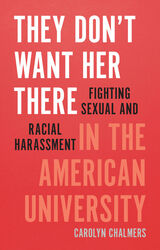 They Don't Want Her There: Fighting Sexual and Racial Harassment in the American University
Carolyn Chalmers
University of Iowa Press, 2022 Before the nation learned about workplace sexual harassment from Anita Hill, and decades before the #MeToo movement, Chinese American professor Jean Jew M.D. brought a lawsuit against the University of Iowa, alleging a sexually hostile work environment within the university’s College of Medicine.
As Jew gained accolades and advanced through the ranks at Iowa, she was met with increasingly vicious attacks on her character by her white male colleagues—implying that her sexuality had opened doors for her. After years of being subjected to demoralizing sexual, racial, and ethnic discrimination, finding herself without any higher-up departmental support, and noting her professional progression beginning to suffer by the hands of hate, Jean Jew decided to fight back. Carolyn Chalmers was her lawyer.
This book tells the inside story of pioneering litigation unfolding during the eight years of a university investigation, a watershed federal trial, and a state court jury trial. In the face of a university determined to defeat them and maintain the status quo, Jew and Chalmers forged an exceptional relationship between a lawyer and a client, each at the top of their game and part of the first generation of women in their fields. They Don’t Want Her There is a brilliant, original work of legal history that is deeply personal and shows today’s professional women just how recently some of our rights have been won—and at what cost.
They Dragged Them through the Streets: A Novel
Hilary Plum
University of Alabama Press, 2013 A veteran of the US war in Iraq commits suicide, and his brother joins with four friends in search of ways to protest the war. Together they undertake a series of small-scale bombings until an explosion claims one of their own. This grave and elegant novel is an elegy for these two deaths and the war itself.
They Dragged Them Through the Streets is a bold meditation on idealism, anger, and the American home front’s experience of today’s wars. This is an innovative work in the great tradition of war literature and a singular chronicle of one generation’s conflicts.
They Eat from Their Labor: Work and Social Change in Colonial Bolivia
Ann Zulawski
University of Pittsburgh Press, 1995
A study of the growth of the indigenous labor force in upper Peru (now Bolivia) during colonial times. Ann Zulawski provides case studies in mining and agriculture, and places her data within a larger historical context than analyzes Iberian and Andean concepts of gender, property, and labor. She concludes that although mercantilism made a critical impact in the New World, the colonial economic system in the Andes was not yet capitalist. Attitudes of both indigenous peoples and Spanish colonizers hindered the process of turning work into a commodity. In addition, the mobilization of labor power both reinforced and undermined each society's ideas about the economic and social roles of men and women.
They Forged the Signature of God: A Novel
Viriato Sención
Northwestern University Press, 1995 This vivid exposé of corruption and political tyranny in the Dominican Republic rang so true to the reality that the President of that country went on television to denounce the book. They Forged the Signature of God went on to become the best-selling book in the history of the Dominican Republic.
Sención's novel follows the lives of three seminary students who suffer from church-state oppression. The book also gives a chilling portrait of Dr. Ramos, a sinister autocrat, who manages to survive six terms as president of his country through manipulation and tyranny. This finely textured novel gives a vivid picture of the internal politics of the Dominican Republic.
 They Fought at Anzio
John S. D. Eisenhower
University of Missouri Press, 2025 Italy, from the toe to the Alps, was the scene of the longest, bloodiest, most frustrating, and least understood series of battles fought by the Western Allies during World War II. Now, John S. D. Eisenhower offers a new look at the Italian campaign, emphasizing the Anzio offensive—an operation pushed by Winston Churchill that fell largely to American troops to carry out. It was visualized as an amphibious landing of two Allied divisions behind German lines that would force the Wehrmacht to evacuate all of Italy. But the Germans held on and, with the arrival of reinforcements, nearly wiped out the Allied troops pinned down at Anzio Beach. By portraying that struggle from the perspectives of both commanders and foot soldiers, this prominent military historian focuses on the experiences of the individuals who fought in the Italian campaign to reveal what the battle at Anzio was all about. But more than the account of one operation, They Fought at Anzio covers the entire Italian campaign, from the landings at Salerno to the capture of Rome. Eisenhower brings a trained eye to reconstructing the difficult terrain of battle, approaching the Anzio campaign as a contest between opposing commands striving to anticipate and counter the opponent’s moves—not as a field exercise but as a deadly struggle for survival. He analyzes the command decisions that brought about the Anzio stalemate, interspersing his account with personal experiences of the men in the trenches, the nurses of the 56th Evacuation Hospital, and the young officers witnessing the horrors of war for the first time. As a study in command, Eisenhower’s narrative gives new credit to generals Lucian Truscott and Fred Walker and assesses both the strengths and weaknesses of General Mark Clark, allowing us to grasp the situation as it appeared to those in command. He also offers compelling portraits of German commanders Field Marshal Albert Kesselring and General Frido von Senger und Etterlin. It has been said that Anzio was a soldier’s battle, remembered more for blood shed than for military objectives achieved. By focusing on the experiences of the soldiers who fought there and the decisions of commanders in perilous circumstances, They Fought at Anzio offers a new appreciation of the contributions of both and a new understanding of this unheralded theater of the war.
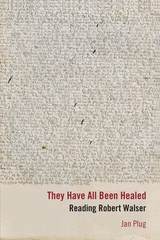 They Have All Been Healed: Reading Robert Walser
Jan Plug
Northwestern University Press, 2016 In perhaps the most provocative reading to date of the Swiss German modernist Robert Walser, Walter Benjamin asserted that Walser's figures "have all been healed." They Have All Been Healed takes up and extends Benjamin's assessment by following the figure of healing throughout major works by Walser, from his minidrama Snow White and his acknowledged masterpieces The Walk and Jakob von Gunten to his enigmatic last novel, The Robber. At the same time, Jan Plug reads Walser alongside his most compelling readers, tracing how not only Benjamin but also Giorgio Agamben, W. G. Sebald, and the Brothers Quay complicate, clarify, and enact that same process of healing in their own work. Working out the theological implications of Walser's work and of the tradition to which he gives rise, Plug at once recasts one of the major authors of the twentieth century and articulates a new conception of healing and salvation.
They Knew Both Sides of Medicine: Cree Tales of Curing and Cursing Told by Alice Ahenakew
H.C. Wolfart
University of Manitoba Press, 2000 Born in 1912, Alice Ahenakew was brought up in a traditional Cree community in north-central Saskatchewan. As a young woman, she married Andrew Ahenakew, a member of the prominent Saskatchewan family, who later became an Anglican clergyman and a prominent healer. Alice Ahenakew's personal reminiscences include stories of her childhood, courtship and marriage, as well as an account of the 1928 influenza epidemic an encounters with a windigo. The centrepiece of this book is the fascinating account of Andrew Ahenakewís bear vision, through which he received healing powers. Written in original Cree text with a full English translation, They Knew both Sides of Medicine also includes an introduction discussing the historical background of the narrative and its style and rhetorical structure, as well as a complete Cree-English glossary.
They Live on The Land: Life in an Open Country Southern Community
Paul W. Terry
University of Alabama Press, 1993 "First published in 1940 as part of the information-gathering effort of the TVA, the work examines Gorgas, Alabama, a predominantly white farming settlement. Hailed as the most intensive case study ever made in the South, the book provides a detailed portrait of southern rural life on the verge of extinction." —Florida Historical Quarterly "One of the finest examples of the genre of the community survey. . . The book is remarkably free of special pleading. And every chapter is paced with fascinating data and insights. The University of Alabama Prss is to be congratulated for reissuing this splendid community study; the volume fits the description of a classic. And Clarence L. Mohr's introduction alone is worth the price of the volume."
—Journal of Southwest Georgia History
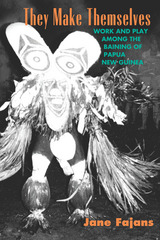 They Make Themselves: Work and Play among the Baining of Papua New Guinea
Jane Fajans
University of Chicago Press, 1997 For generations of anthropologists, the Baining people have presented a challenge, because of their apparent lack of cultural or social structure. This group of small-scale horticulturists seems devoid of the complex belief systems and social practices that characterize other traditional peoples of Papua New Guinea. Their daily existence is mundane and repetitive in the extreme, articulated by only the most elementary familial relationships and social connections. The routine of everyday life, however, is occasionally punctuated by stunningly beautiful festivals of masked dancers, which the Baining call play and to which they attribute no symbolic significance.
In a new work sure to evoke considerable repercussions and debate in anthropological theory, Jane Fajans courageously takes on the "Baining Problem," arguing that the Baining define themselves not through intricate cosmologies or social networks, but through the meanings generated by their own productive and reproductive work.
 They Married Adventure: The Wandering Lives of Martin and Osa Johnson
Pascal James Imperato
Rutgers University Press, 1999 Martin and Osa Johnson thrilled American audiences of the 1920s and 30s with their remarkable movies of far-away places, exotic peoples, and the dramatic spectacle of African wildlife. Their own lives were as exciting as the movies they made--sailing through the South Sea Islands, dodging big game at African waterholes, flying small planes over the veldt, taking millionaires on safari. Osa Johnson’s ghostwritten autobiography, I Married Adventure, became a national bestseller. The 1939 film version was billed as “the story of World Exploration’s First Lady, whose indomitable daring would be stayed by neither snarling lion nor crouching leopard, tropic tempest nor savage tribesman!” Heroes to millions, Osa and Martin seemed to embody glamor, daring, and the all-American ideal of self-reliance. Probing beneath the glamor of the Johnsons’ public image, Pascal and Eleanor Imperato explore the more human side of the couple’s lives--and ways the Johnsons shaped, for better and for worse, America’s vision of Africa. Drawing on many years of research, access to a wealth of letters and archives, interviews with many who worked closely with the Johnsons, and their own deep knowledge of Africa, the authors present a fascinating and intimate portrait of this intrepid couple.
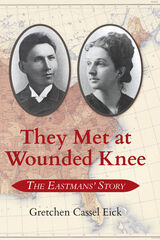 They Met at Wounded Knee: The Eastmans' Story
Gretchen Cassel Eick
University of Nevada Press, 2020 After ten years as a foreign and military policy lobbyist in Washington and four as director of an interfaith lobby, Gretchen Eick, moved to Kansas, earned a Ph.D. in American Studies from the University of Kansas and became Professor of History at Friends University. She was awarded two Fulbright Scholar awards, teaching in Latvia and Bosnia and Herzegovina (BiH), and a Fulbright Hays to South Africa. Her book on the civil rights movement—Dissent in Wichita: The Civil Right Movement in the Midwest, 1954-1972 (U of IL Press, 2001/2007) won three awards: The Richard Wentworth award from the University of Illinois as the best book in American history that press published over two years, the University of Kansas’ Hall Center Award for the best book by a Kansas author (the first time the award went to someone not teaching at K.U.), and the William Rockhill Nelson award for the best nonfiction book by a Kansas or Missouri author. The book resulted in two museum exhibits, a 2009 Telly Award-winning public television documentary about the first successful student-led sit-in, the 1958 Dockum Drug Store Sit-in in Wichita, and mention in the Smithsonian Museum of African American History and Culture.
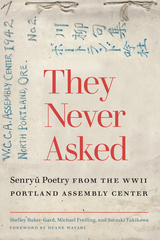 They Never Asked: Senryu Poetry from the WWII Portland Assembly Center
Shelley Baker-Gard
Oregon State University Press, 2023 In 1942, after the passage of Executive Order 9066, Japanese families were removed from their homes in Oregon and the Yakima Valley and sent to the Portland International Livestock Exposition Center, where they were housed in converted animal stalls. The Wartime Civil Control Administration kept internees at the Portland Assembly Center until September 1942, when they were transferred to newly built permanent internment camps at Minidoka, Heart Mountain, and Tule Lake.
The Japanese American communities in Oregon and southern Washington were relatively small and many of the detainees knew each other; they drew on existing family and community networks to help each other through the long summer, living in inhumane conditions under the constant threat of violence. Several members of Bara Ginsha, a Portland poetry group, decided to continue their work while incarcerated, primarily by writing senryū, a type of Japanese poetry related to haiku.
They Never Asked is a collection of work produced by Bara Ginsha members in the WCCA camp, based on a journal kept by Masaki Kinoshita. The senryū collected here were written by a group of twenty-two poets, who produced hundreds of poems. Individually, the poems reflect the thoughts and feelings the authors experienced while being detained in the Center; collectively, they reflect the resilience and resistance of a community denied freedom. Editors Shelley Baker-Gard, Michael Freiling, and Satsuki Takikawa present translations of the poems alongside the originals, supplemented by historical and literary context and a foreword by Duane Watari, Masaki Kinoshita’s grandson.
 “They Never Want to Tell You”: Children Talk about Cancer
David J. Bearison
Harvard University Press, 1991 “They Never Want to Tell You” transcends the negative metaphors and clichés of life-threatening disease to give voice to the culture of cancer and to the behavior and attitudes of those who function within that culture—as patients, medical professionals, family, and friends.
In these extraordinary narratives, children coping with cancer reveal their most personal experiences, and they speak with a candor that breaks through the cultural taboos ostensibly designed to protect us from the disease. The rich, compassionate, and honest words of these children give expression to concerns that adults who are struggling with cancer find nearly impossible to articulate. Free of social conventions and cognitive distortions, each story presents a powerful variation on the theme of survival in the face of the continuing uncertainties of life-threatening disease.
David Bearison, a developmental psychologist and psychotherapist, is keenly aware of the psychological impact of cancer on children, particularly as survival times for childhood cancers lengthen and complex treatments intensify concern about the emotional—not merely physical—well-being of children. Bearison has culled from scores of interviews the most salient moments that represent these individual children in their shared struggle with disease. In these pages the children express their wildest hopes and worst fears about cancer. They speak of the absolute necessity of full disclosure, the problems of relating to friends and family, the difficult adjustment to hair loss, their feelings of punishment, grief, and spirituality, and many other issues. In the course of these stories the children reveal not only their will to survive and their extraordinary capacity to understand themselves and their condition, but their altruistic desire to share that understanding with other children as well as with adults who have cancer. “They Never Want to Tell You” is rich and rewarding reading for cancer patients, their families, and health-care professionals alike.
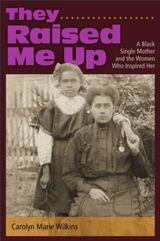 They Raised Me Up: A Black Single Mother and the Women Who Inspired Her
Carolyn Marie Wilkins
University of Missouri Press, 2013 At the height of the cocaine-fueled 1980s, Carolyn Wilkins left a disastrous marriage in Seattle and, hoping to make it in the music business, moved with her four-year-old daughter to a gritty working-class town on the edge of Boston. They Raised Me Up is the story of her battle to succeed in the world of jam sessions and jazz clubs—a man’s world where women were seen as either sex objects or doormats. To survive, she had to find a way to pay the bills, overcome a crippling case of stage fright, fend off a series of unsuitable men, and most important, find a reliable babysitter. Alternating with Carolyn’s story are the stories of her ancestors and mentors—five musically gifted women who struggled to realize their dreams at the turn of the twentieth century: Philippa Schuyler, whose efforts to “pass” for white inspired Carolyn to embrace her own black identity despite her “damn near white” appearance and biracial child; Marjory Jackson, the musician and single mother whose dark complexion and flamboyant lifestyle raised eyebrows among her contemporaries in the snobby, color-conscious world of the African American elite; Lilly Pruett, the daughter of an illiterate sharecropper whose stunning beauty might have been her only ticket out of the “Jim Crow” South; Ruth Lipscomb, the country girl who dreamed, against all odds, of becoming a concert pianist and realized her improbable ambition in 1941; Alberta Sweeney, who survived a devastating personal tragedy by relying on the musical talent and spiritual stamina she had acquired growing up in a rough-and-tumble Kansas mining town. They Raised Me Up interweaves memoir with family history to create an entertaining, informative, and engrossing read that will appeal to anyone with an interest in African American or women’s history or to readers simply looking for an intriguing story about music and family.
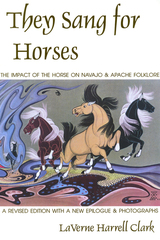 They Sang for Horses: The Impact of the Horse on Navajo and Apache Folklore
LaVerne Harrell Clark
University Press of Colorado, 2001 No Native American groups placed more emphasis on the horse in their lives than did the Navajo and Apache of the Southwest. They Sang for Horses, first published in 1966 and now considered a classic, remains the only comprehensive treatment of the profound mystical influence that the horse has exerted for more than three hundred years. In this completely redesigned and expanded edition, LaVerne Harrell Clark examines how storytellers, singers, medicine men, and painters created the animal's evolving symbolic significance by adapting existing folklore and cultural symbols. Exploring the horse's importance in ceremonies, songs, prayers, customs, and beliefs, she investigates the period of the horse's most pronounced cultural impact on the Navajo and the Apache, starting from the time of its acquisition from the Spanish in the seventeenth century and continuing to the mid-1960s, when the pickup truck began to replace it as the favored means of transportation. In addition, she presents a look at how Navajos and Apaches today continue to redefine the horse's important role in their spiritual as well as material lives. This classic work is a must for historians, readers interested in Native American folklore and mythology, and anyone who has ever been captivated by the magic and romance of the horse. Co-winner of the 1967 University of Chicago Folklore Award.
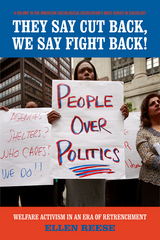 They Say Cutback, We Say Fight Back!: Welfare Activism in an Era of Retrenchment
Ellen Reese
Russell Sage Foundation, 2012 In 1996, President Bill Clinton hailed the "end of welfare as we know it" when he signed the Personal Responsibility and Work Opportunity Act. The law effectively transformed the nation's welfare system from an entitlement to a work-based one, instituting new time limits on welfare payments and restrictions on public assistance for legal immigrants. In They Say Cutback, We Say Fight Back, Ellen Reese offers a timely review of welfare reform and its controversial design, now sorely tested in the aftermath of the Great Recession. The book also chronicles the largely untold story of a new grassroots coalition that opposed the law and continues to challenge and reshape its legacy. While most accounts of welfare policy highlight themes of race, class and gender, They Say Cutback examines how welfare recipients and their allies contested welfare reform from the bottom-up. Using in-depth case studies of campaigns in Wisconsin and California, Reese argues that a crucial phase in policymaking unfolded after the bill's passage. As counties and states set out to redesign their welfare programs, activists scored significant victories by lobbying officials at different levels of American government through media outreach, protests and organizing. Such efforts tended to enjoy more success when based on broad coalitions that cut across race and class, drawing together a shifting alliance of immigrants, public sector unions, feminists, and the poor. The book tracks the tensions and strategies of this unwieldy group brought together inadvertently by their opposition to four major aspects of welfare reform: immigrants' benefits, welfare-to-work policies, privatization of welfare agencies, and child care services. Success in scoring reversals was uneven and subject to local demographic, political and institutional factors. In California, for example, workfare policies created a large and concentrated pool of new workers that public sector unions could organize in campaigns to change policies. In Wisconsin, by contrast, such workers were scattered and largely placed in private sector jobs, leaving unions at a disadvantage. Large Latino and Asian immigrant populations in California successfully lobbied to restore access to public assistance programs, while mobilization in Wisconsin remained more limited. On the other hand, the unionization of child care providers succeeded in Wisconsin – but failed in California – because of contrasting gubernatorial politics. With vivid descriptions of the new players and alliances in each of these campaigns, Reese paints a nuanced and complex portrait of the modern American welfare state. At a time when more than 40 million Americans live in poverty, They Say Cutback offers a sobering assessment of the nation's safety net. As policymakers confront budget deficits and a new era of austerity, this book provides an authoritative guide for both scholars and activists looking for lessons to direct future efforts to change welfare policy. A Volume in the American Sociological Association's Rose Series in Sociology
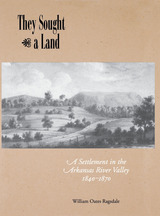 They Sought a Land: A Settlement in the Arkansas River Valley, 1840–1870
William Oates Ragsdale
University of Arkansas Press, 1997 They Sought a Land, originally published in 1997, is the study of the rise and decline of a group of pioneers from the Carolinas who came to the Arkansas River Valley in the mid nineteenth century. Pisgah, as their settlement came to be known, drew five hundred pioneers from 1840 to 1870, forming a community bound by blood, friendship, and a strong Calvinist heritage.
Pisgah grew and prospered, developing increasingly successful farming practices, landholding patterns, and trading strategies. But the Civil War took a heavy toll, taking workers away from farms, subjecting those left on the home front to deprivation and violence, and creating division in the community. By 1870, the people of Pisgah had dispersed into Arkansas’s larger developing society.
Absorbing to read and rich with colorful detail, They Sought a Land is an important story of the westward expansion of the United States and the settling of the American South during the nineteenth century.
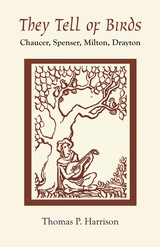 They Tell of Birds: Chaucer, Spenser, Milton, Drayton
By Thomas P. Harrison
University of Texas Press, 1956 Thomas P. Harrison here combines a lifelong interest in birds with a professional study of literature. This book, a study of birds as they are presented by four great English poets, inquires into the extent and sources of their knowledge of birds and analyzes the methods by which they adapted that knowledge for poetic purposes. The interrelationships of their poetry are also discussed, providing a new basis for comparison of four poets whose work is closely linked on other grounds remote from natural history. The first chapter reviews representative figures and works of the centuries preceding the Renaissance and illustrates the medieval poetic conventions about birds that influenced the four poets. The remaining chapters treat each poet and his works in detail, comparing their use of this area of the natural world. The book concludes with an index of bird allusions in the works of the four poets, with occasional quotations illustrating the manner in which the traditional or observed habits of particular birds were put to poetic use. The book is illustrated with medieval and Renaissance illustrations of birds. In this careful treatment of an important element of the poets’ works, Harrison has indicated the larger picture of their attitudes toward and use of the natural world about them. Accordingly, it might be said to constitute a chapter on the relationship of poetry and science at a crucial period in the history of thought. For much of his material, Harrison journeyed to England, where, among other research activities, he visited museums of natural history and bird sanctuaries throughout the country. Primarily intended for students of literature, They Tell of Birds will also be of interest to ornithologists in its presentation of the beliefs of antiquity and the Middle Ages about particular birds. For, as the distinguished ornithologist E. M. Nicholson has said: “We owe to poets a wealth of records of living wild birds long before scientific ornithology had started.”
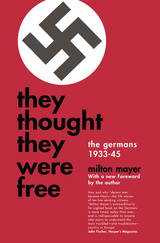 They Thought They Were Free: The Germans, 1933-45
Milton Mayer
University of Chicago Press, 1966 First published in 1955, They Thought They Were Free is an eloquent and provocative examination of the development of fascism in Germany. Mayer’s book is a study of ten Germans and their lives from 1933-45, based on interviews he conducted after the war when he lived in Germany. Mayer had a position as a research professor at the University of Frankfurt and lived in a nearby small Hessian town which he disguised with the name “Kronenberg.” “These ten men were not men of distinction,” Mayer noted, but they had been members of the Nazi Party; Mayer wanted to discover what had made them Nazis.
“What happened here was the gradual habituation of the people, little by little, to being governed by surprise; to receiving decisions deliberated in secret; to believing that the situation was so complicated that the government had to act on information which the people could not understand, or so dangerous that, even if the people could not understand it, it could not be released because of national security. And their sense of identification with Hitler, their trust in him, made it easier to widen this gap and reassured those who would otherwise have worried about it.”--from Chapter 13, “But Then It Was Too Late”
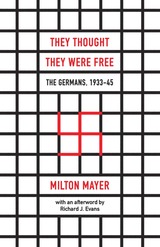 They Thought They Were Free: The Germans, 1933–45
Milton Mayer
University of Chicago Press, 2017 The classic, chilling account of how fascism took over Germany—and of the constant danger of complacency
“When this book was first published it received some attention from the critics but none at all from the public. Nazism was finished in the bunker in Berlin and its death warrant signed on the bench at Nuremberg.”
That’s Milton Mayer, writing in a foreword to the 1966 edition of They Thought They Were Free. He’s right about the critics: the book was a finalist for the National Book Award in 1956. General readers may have been slower to take notice, but over time they did—what we’ve seen over decades is that any time people, across the political spectrum, start to feel that freedom is threatened, the book experiences a ripple of word-of-mouth interest.
They Thought They Were Free is an eloquent and provocative examination of the development of fascism in Germany. Mayer’s book is a study of ten Germans and their lives from 1933-45, based on interviews he conducted after the war when he lived in Germany. Mayer had a position as a research professor at the University of Frankfurt and lived in a nearby small Hessian town which he disguised with the name “Kronenberg.” “These ten men were not men of distinction,” Mayer noted, but they had been members of the Nazi Party; Mayer wanted to discover what had made them Nazis. His discussions with them of Nazism, the rise of the Reich, and mass complicity with evil became the backbone of this book, an indictment of the ordinary German that is all the more powerful for its refusal to let the rest of us pretend that our moment, our society, our country are fundamentally immune.
A new foreword to this edition by eminent historian of the Reich Richard J. Evans puts the book in historical and contemporary context. We live in an age of fervid politics and hyperbolic rhetoric. They Thought They Were Free cuts through that, revealing instead the slow, quiet accretions of change, complicity, and abdication of moral authority that quietly mark the rise of evil.
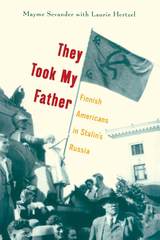 They Took My Father: Finnish Americans in Stalin’s Russia
Mayme Sevander
University of Minnesota Press, 2004 A riveting memoir of one family’s struggle under a totalitarian regime “Mayme Sevander and Laurie Hertzel tell a poignant tale of a hidden corner of U.S. and Soviet history. Tracing the hopes and hardships of one family over two continents, They Took My Father explores the boundaries of loyalty, identity, and ideals.” —Amy Goldstein, Washington Post “What makes Mayme’s story so uniquely—almost unbelievably—tragic is that her family chose to move from the United States to the Soviet Union in 1934, thinking they were going to help build a ‘worker’s paradise.’ They found, instead, a deadly nightmare.” — St. Paul Pioneer Press“This gripping and timely book traces the beginnings of communism not as dry history but as a fascinating personal drama that spreads across Russia, Finland, and the mining towns of Upper Michigan and the Iron Range of Minnesota. . . . An important and largely ignored part of history comes alive in one woman’s story of her tragic family, caught up in the all-consuming struggle of the twentieth century.” —Frank Lynn, political reporter, New York Times
They Used to Call Me Snow White . . . But I Drifted: Women’s Strategic Use of Humor
Gina Barreca
University Press of New England, 2013 Published by Viking in 1991 and issued as a paperback through Penguin Books in 1992, Snow White became an instant classic for both academic and general audiences interested in how women use humor and what others (men) think about funny women. Barreca, who draws on the work of scholars, writers, and comedians to illuminate a sharp critique of the gender-specific aspects of humor, provides laughs and provokes arguments as she shows how humor helps women break rules and occupy center stage. Barreca’s new introduction provides a funny and fierce, up-to-the-minute account of the fate of women’s humor over the past twenty years, mapping what has changed in our culture—and questioning what hasn’t.
They Went to College: A Study of 951 Former University Students
C. Robert Pace
University of Minnesota Press, 1941
They Went to College was first published in 1941. Minnesota Archive Editions uses digital technology to make long-unavailable books once again accessible, and are published unaltered from the original University of Minnesota Press editions.
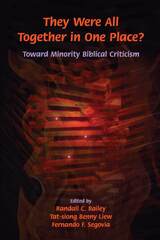 They Were All Together in One Place? Toward Minority Biblical Criticism
Randall C. Bailey
SBL Press, 2009 Critics from three major racial/ethnic minority communities in the United States—African American, Asian American, and Latino/a American—focus on the problematic of race and ethnicity in the Bible and in contemporary biblical interpretation. With keen eyes on both ancient text and contemporary context, contributors pay close attention to how racial/ethnic dynamics intersect with other differential relations of power such as gender, class, sexuality, and colonialism. In groundbreaking interaction, they also consider their readings alongside those of other racial/ethnic minority communities. The volume includes an introduction pointing out the crucial role of this work within minority criticism by looking at its historical trajectory, critical findings, and future directions. The contributors are Cheryl B. Anderson, Francisco O. García-Treto, Jean-Pierre Ruiz, Frank M. Yamada, Gale A. Yee, Jae-Won Lee, Gay L. Byron, Fernando F. Segovia, Randall C. Bailey, Tat-siong Benny Liew, Demetrius K. Williams, Mayra Rivera Rivera, Evelyn L. Parker, and James Kyung-Jin Lee.
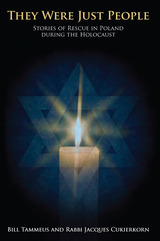 They Were Just People: Stories of Rescue in Poland During the Holocaust
Bill Tammeus & Rabbi Jacques Cukierkorn
University of Missouri Press, 2009 Hitler’s attempt to murder all of Europe’s Jews almost succeeded. One reason it fell short of its nefarious goal was the work of brave non-Jews who sheltered their fellow citizens. In most countries under German control, those who rescued Jews risked imprisonment and death. In Poland, home to more Jews than any other country at the start of World War II and location of six German-built death camps, the punishment was immediate execution. This book tells the stories of Polish Holocaust survivors and their rescuers. The authors traveled extensively in the United States and Poland to interview some of the few remaining participants before their generation is gone. Tammeus and Cukierkorn unfold many stories that have never before been made public: gripping narratives of Jews who survived against all odds and courageous non-Jews who risked their own lives to provide shelter. These are harrowing accounts of survival and bravery. Maria Devinki lived for more than two years under the floors of barns. Felix Zandman sought refuge from Anna Puchalska for a night, but she pledged to hide him for the whole war if necessary—and eventually hid several Jews for seventeen months in a pit dug beneath her house. And when teenage brothers Zygie and Sol Allweiss hid behind hay bales in the Dudzik family’s barn one day when the Germans came, they were alarmed to learn the soldiers weren’t there searching for Jews, but to seize hay. But Zofia Dudzik successfully distracted them, and she and her husband insisted the boys stay despite the danger to their own family. Through some twenty stories like these, Tammeus and Cukierkorn show that even in an atmosphere of unimaginable malevolence, individuals can decide to act in civilized ways. Some rescuers had antisemitic feelings but acted because they knew and liked individual Jews. In many cases, the rescuers were simply helping friends or business associates. The accounts include the perspectives of men and women, city and rural residents, clergy and laypersons—even children who witnessed their parents’ efforts. These stories show that assistance from non-Jews was crucial, but also that Jews needed ingenuity, sometimes money, and most often what some survivors called simple good luck. Sixty years later, they invite each of us to ask what we might do today if we were at risk—or were asked to risk our lives to save others.
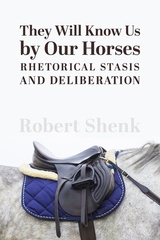 They Will Know Us by Our Horses
Shenk Robert
St. Augustine's Press, 2021 Robert Shenk is both scholar and teacher of classical rhetoric. Now a member of a dying breed, he was once ignited by the late Edward Corbett (Classical Rhetoric for the Modern Student) and after decades of study and research Shenk has written a masterpiece that reintroduces and defines what is known as forestasis in the field of rhetoric. The famous classical concept of rhetorical stasis has three principle components: fact, definition and quality. This was the main thrust of rhetorical invention for some 1500 years, from ancient times up through the modern era. It is, however, a forensic rhetoric in that it looks to the past. As Shenk presents stasis he relies on Cicero’s famous defense of Milo. Did Milo kill Clodius? Yes, but did Milo murder Clodius? No, he walked into an ambush and his killing was self-defense. Furthermore, his act was a good one insofar as Clodius was a bad citizen and the republic benefited from his death. The three aspects of rhetorical stasis, seen in this example, lead one to the heart of the issue at hand. But rhetorical stasis can be used for more than seeing the past for what it is. One can effectively use it to envision the future one wishes to achieve.
Shenk notes that Aristotle equips his doctrine of rhetoric with a forward-looking dimension, often overlooked or ignored by scholars. There is stasis, but also forestasis, which amounts to a way not only of “getting to the point” of an event, but of a manner of forming decisions. The ancient rhetoricians, says Shenk, all discussed deliberative rhetoric as well as forensic rhetoric, and even though they differed in their respective descriptions they all generally agreed on its three main elements: possibility (often including difficulty or ease of execution), expedience (also called utility or benefit, even profit), and honor (or morality in general depending on the conversation). One places these elements into play when considering the viability of a proposal: “Is it possible? Is it beneficial? Is it honorable?” This pertains to deliberative rhetoric, or arguments that touch upon the future. It is not just grasping things that have been, but also understanding the core of that which is to come through formulating our decisions to act.
Laying the foundations for this broader view of stasis that, while depending on the ancient rhetoricians, includes a forward-posed heuristic that can, Shenk argues, reinvigorate the concept of rhetorical stasis and expand its theoretical reach. His intention is to show how rhetorical invention (discovery of the argument) is meant to look both directions. Rhetoric that properly presents what has passed can also be employed to identify the best next move. Or, as Shakespeare reminds us in Prince Hal’s decision to participate in the robbery at Gadshill, “Yea, but ‘tis like that they will know us by our horses, by our habits, and by every other appointment to be ourselves.”
In addition to examples drawn from his naval background, Shenk references Homer, Shakespeare and Milton in demonstrating forestasis to be a widely useful parallel to traditional stasis. Shenk argues that both deserve to be widely taught as prime, complementary modern techniques of invention. Doing so would make stasis more relevant and lead students, especially, to discover the crux of any matter that requires deliberative action. This is an essential and yet largely missing element of contemporary education. This ancient method, Shenk asserts, is a habit that although rhetorical leads to actual discoveries that in turn yield real outcomes, both abstract and practical.
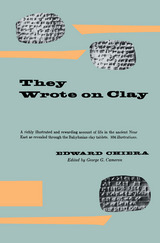 They Wrote on Clay: The Babylonian Tablets Speak Today
Edward Chiera
University of Chicago Press, 1956 Edward Chiera was that most remarkable of men, a competent and respected scholar possessed of an ardent desire to make his research readily and entertainingly available to laymen. More remarkable, Chiera had extraordinary gifts to equal to his desire. They Wrote on Clay combines fascinatingly the fruits of sound and painstaking archeology with the natural-born storyteller's art. As transmitted by Chiera, the message of the recently discovered Babylonian clay tablets becomes an absorbing exrusion into the common life of a vanished civilization. Few will read They Wrote on Clay without becoming infected with something of Chiera's love for the rich archeological lore of the ancient Near East.
"The book presents, briefly and clearly, a vivid picture of a long-dead people who in numerous ways were very like ourselves."—L. M. Field, New York Times
"No mystery story can be as exciting."—Harper's
"Plainly and fetchingly written."—New Republic
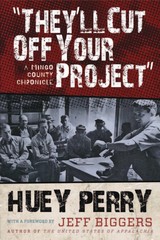 They'll Cut Off Your Project: A Mingo County Chronicle
Huey Perry, with a foreword by Jeff Biggers
West Virginia University Press, 2010 In old England, if a king didn’t like you, he would cut off your head. Now, if they don’t like you, they’ll cut off your project! As the Johnson Administration initiated its war on poverty in the 1960s, the Mingo County Economic Opportunity Commission project was established in southern West Virginia. Huey Perry, a young, local history teacher was named the director of this program and soon he began to promote self-sufficiency among low-income and vulnerable populations. As the poor of Mingo County worked together to improve conditions, the local political infrastructure felt threatened by a shift in power. Bloody Mingo County, known for its violent labor movements, corrupt government, and the infamous Hatfield-McCoy rivalry, met Perry’s revolution with opposition and resistance. In They’ll Cut Off Your Project, Huey Perry reveals his efforts to help the poor of an Appalachian community challenge a local regime. He describes this community’s attempts to improve school programs and conditions, establish cooperative grocery stores to bypass inflated prices, and expose electoral fraud. Along the way, Perry unfolds the local authority’s hostile backlash to such change and the extreme measures that led to an eventual investigation by the FBI. They’ll Cut Off Your Project chronicles the triumphs and failures of the war on poverty, illustrating why and how a local government that purports to work for the public’s welfare cuts off a project for social reform.
"They'll Do to Tie To!": The Story of Hood's Arkansas Toothpicks
Calvin C. Collier
Butler Center for Arkansas Studies, 2015 The 3rd Arkansas was one of the most distinguished and well-respected Confederate regiments of the Civil War. It was the only Arkansas regiment to serve the entire war in the east, where most of the major battles were fought. The men of the 3rd Arkansas acquired a reputation as tenacious fighters and were known for the long knives—“Arkansas toothpicks”—they carried. As part of Gen. John Bell Hood’s Texas Brigade, they found themselves in some of the fiercest fighting in the war in places such as the famous “sunken road” at Antietam and the Battle of Gettysburg. “They’ll Do to Tie To!” was originally published in 1959.
 They're Calling You Home
Doug Crandell
Northern Illinois University Press, 2012
Doug Crandell is a maestro in multiple genres: the author of critically-acclaimed true crime books, devilishly charming memoirs, and tragicomic works of fiction about small-town life that are leavened in equal measure with poignancy and humor.
Enter They’re Calling You Home, Crandell’s latest novel. This is the story of Gabriel Burke, a writer who is alienated from everyone he loves for exposing a discomforting family secret in a bestselling memoir. Divorced from his wife, estranged from his daughter, and loathed by his alcoholic brother, Burke must confront all of them when he returns to his hometown in Smallwood, Indiana to chronicle the story of a gruesome mass murder there.
Thus begins this intricately woven tale of redemption and forgiveness, of men paying the wages of masculinity, of sons coming to grips with the sins of their fathers, and of one writer grappling with the burdens of journalistic integrity. Throughout this deftly crafted work, secrets present a hall of mirrors through which Burke must constantly navigate: the secret of his father’s sex crimes, the furtive steps his family takes to deny them, and the surreptitious efforts of State and local officials as they try and cover up the murder case he’s investigating. Part road trip, part who-dunnit, part voyage of self discovery, Crandell’s moving novel is ultimately the story of a journey in which the only possible destination is its starting point—home.
Thick and Thin: Moral Argument at Home and Abroad
Michael Walzer
University of Notre Dame Press, 1994 In this book, Michael Walzer revises and extends the arguments first put forth in his influential Spheres of Justice and frames his ideas about justice, social criticism, and national identity in light of the new political world that has arisen in the past decade.
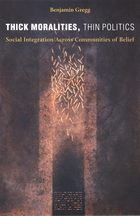 Thick Moralities, Thin Politics: Social Integration Across Communities of Belief
Benjamin Gregg
Duke University Press, 2003 At the center of pluralistic societies like the United States is the question of how to make broadly consensual social policy in light of the different moral values held by a heterogeneous population varying in ethnicity, sexual identity, religion, and political belief. In Thick Moralities, Thin Politics Benjamin Gregg develops a new approach to dealing with conflicting values in the policymaking process. Arguing that public policy suffers when politics are laden with moral doctrines, Gregg contends that "thickly" moral public philosophies cannot be the basis of a successful political process. He offers a "thin" model of political decision-making which brackets moral questions (within the public sphere), deliberately working around them whenever possible—not toward political consensus, but rather the more realistic goal of mutual accommodation. Thick Moralities, Thin Politics grapples with the work of theorists from both sides of the Atlantic, including Jürgen Habermas, Anthony Giddens, and Niklas Luhmann, as well as George Herbert Mead, Erving Goffman, and Harold Garfinkel. Gregg develops a model of validity for arguments made in the public sphere, for understanding among competing worldviews, and for adjudicating disputes generated by normative differences. He applies his theory of politics to specific issues of contemporary social life, including those relating to the place of women, minorities, and multiculturalism in American and European society today. He also addresses the scientific study of religion, issues of legal interpretation, and the critique of ideology, in each case illuminating how different epistemic systems, as well as competing value systems, can achieve some understanding of one another. Gregg demonstrates, ultimately, that thin politics actually further, rather than reduce, citizens' engagement in the political process.
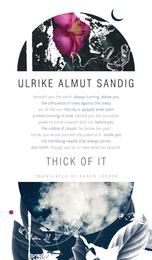 Thick of It
Ulrike Almut Sandig
Seagull Books, 2018 The poems of Ulrike Almut Sandig are at once simple and fantastic. This new collection finds her on her way to imaginary territories. Thick of It charts a journey through two hemispheres to “the center of the world” and navigates a “thicket” that is at once the world, the psyche, and language itself. The poems explore an urgently urban reality, but that reality is interwoven with references to nightmares, the Bible, fairy tales, and nursery rhymes—all overlaid with a finely tuned longing for a disappearing world. The old names are forgotten, identities fall away; things disappear from the kitchen; everything is sliding away. Powerful themes emerge, but always mapped onto the local, the fractured individual in “the thick of it” all. This is language at its most crafted and transformative, blisteringly contemporary, but with a kind of austerity, too. By turns comic, ironic, skeptical, nostalgic, these poems are also profoundly musical, exploiting multiple meanings and stretching syntax, so that the audience is constantly kept guessing, surprised by the next turn in the line.
Thicker Than Blood: How Racial Statistics Lie
Tukufu Zuberi
University of Minnesota Press, 2003 A hard-hitting investigation of the racist uses of statistics—now in paperback! Tukufu Zuberi offers a concise account of the historical connections between the development of the idea of race and the birth of social statistics. Zuberi describes how race-differentiated data are misinterpreted in the social sciences and asks searching questions about the ways racial statistics are used. He argues that statistical analysis can and must be deracialized, and that this deracialization is essential to the goal of achieving social justice for all.
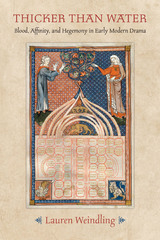 Thicker Than Water: Blood, Affinity, and Hegemony in Early Modern Drama
Lauren Weindling
University of Alabama Press, 2023 Examines the discourses around the role of bloodlines and kinship in the social hierarchies of early modern Europe
“Blood is thicker than water,” goes the old proverb. But do common bloodlines in fact demand special duties or prescribe affections? Thicker than Water examines the roots of this belief by studying the omnipresent discourse of bloodlines and kindred relations in the literature of early modern Europe.
Early modern discourses concerning kinship promoted the idea that similar bloodlines dictated greater love or affinity, stabilizing the boundaries of families and social classes, as well as the categories of ethnicity and race. Literary representations of romantic relationships were instrumental in such conceptions, and Lauren Weindling examines how drama from England, France, and Italy tests these assumptions about blood and love, exposing their underlying political function. Among the key texts that Weindling studies are Shakespeare’s Romeo and Juliet¸ Othello, and The Merchant of Venice, Pierre Corneille’s Le Cid, Giambattista della Porta’s La Sorella and its English analog, Thomas Middleton’s No Wit/Help Like a Woman’s, John Ford’s ’Tis Pity She’s a Whore, and Machiavelli’s La Mandragola.
Each of these plays offers an extreme limit case for early modern notions of belonging and exclusion, through plots of love, courtship, and marriage, including blood feuds and incest. Moreover, they feature the voices of marginalized groups, unprivileged by these metrics and ideologies, and thus offer significant counterpoints to this bloody worldview.
While most critical studies of blood onstage pertain to matters of guilt or violence, Thicker Than Water examines the work that blood does unseen in arbitrating social and emotional connections between persons, and thus underwriting our deepest forms of social organization.
 Thicker Than Water: The Quest for Solutions to the Plastic Crisis
Erica Cirino
Island Press, 2021 Much of what you’ve heard about plastic pollution may be wrong. Instead of a great island of trash, the infamous Great Pacific Garbage Patch is made up of manmade debris spread over hundreds of miles of sea—more like a soup than a floating garbage dump. Recycling is more complicated than we were taught: less than nine percent of the plastic we create is reused, and the majority ends up in the ocean. And plastic pollution isn’t confined to the open ocean: it’s in much of the air we breathe and the food we eat.
In Thicker Than Water: The Quest for Solutions to the Plastic Crisis, journalist Erica Cirino brings readers on a globe-hopping journey to meet the scientists and activists telling the real story of the plastic crisis. From the deck of a plastic-hunting sailboat with a disabled engine, to the labs doing cutting-edge research on microplastics and the chemicals we ingest, Cirino paints a full picture of how plastic pollution is threatening wildlife and human health. Thicker Than Water reveals that the plastic crisis is also a tale of environmental injustice, as poorer nations take in a larger share of the world’s trash, and manufacturing chemicals threaten predominantly Black and low-income communities.
There is some hope on the horizon, with new laws banning single-use items and technological innovations to replace plastic in our lives. But Cirino shows that we can only fix the problem if we face its full scope and begin to repair our throwaway culture. Thicker Than Water is an eloquent call to reexamine the systems churning out waves of plastic waste.
The Thicket: Poems
Kasey Jueds
University of Pittsburgh Press, 2021 The Thicket opens into intimate encounters with the more-than-human world—rivers, birds, stones—and with a “you” that is not a person, necessarily, but also not not a person: maybe God, maybe an aspect of the self, maybe neither or both. Often speaking of/to the small or overlooked (weeds by a roadside, an abandoned silo), the poems orient themselves toward edges, transitional spaces like the one where fields shift into woods. Where does one body stop? The Thicket takes an interest in becoming, one thing flowing into something else.
The Thickets
Józef Łobodowski
Central European University Press, 2025 This novel is the first part of the Ukrainian Trilogy of Polish poet and novelist Józef Łobodowski. Written between 1955 and 1960, the action of the trilogy plays out, for the most part, in the Kuban areas of Russia. Here Ukrainian, Russian, and Cossack live alongside and interact with Tatar and Circassian; there was also a large influx of other nationalities subject to the Tsar, such as Armenians and Poles — to which latter nation belongs Staś (Stanisław), the main character of the trilogy. The Thickets presents the reader with a vivid picture of the chaos that reigned in the former Russian Empire following the toppling and execution of the Tsar, and the fall of Kerensky’s government. Young Staś, who had studied at the local classical gymnasium, is now reduced to peddling contraband on the black market, discovers to the reader’s eyes the chaos of war and occupation in an especially visceral way.
The Thief of Words
Anthony Bukoski
University of Wisconsin Press, 2025 The Thief of Words is filled with desperate runaways, the unhappily married, and the displaced. These characters often long for happiness but struggle to explain—even to themselves—what that would entail.
The lightly interconnected stories in this riveting collection are split between the Polish American communities of northern Wisconsin and Louisiana, where refugees from World War II were resettled. Exploring themes of dislocation and assimilation, love and loneliness, and generational conflict, Anthony Bukoski admirably paints portraits of people doing their best, despite the odds and their sometimes-thwarted attempts to follow the urgings of their better angels.
 The Thief, the Cross, and the Wheel: Pain and the Spectacle of Punishment in Medieval and Renaissance Europe
Mitchell B. Merback
University of Chicago Press, 1999 Christ's Crucifixion is one of the most recognized images in Western culture, and it has come to stand as a universal symbol of both suffering and salvation. But often overlooked is the fact that ultimately the Crucifixion is a scene of capital punishment. Mitchell Merback reconstructs the religious, legal, and historical context of the Crucifixion and of other images of public torture. The result is a fascinating account of a time when criminal justice and religion were entirely interrelated and punishment was a visual spectacle devoured by a popular audience.
Merback compares the images of Christ's Crucifixion with those of the two thieves who met their fate beside Jesus. In paintings by well-known Northern European masters and provincial painters alike, Merback finds the two thieves subjected to incredible cruelty, cruelty that artists could not depict in their scenes of Christ's Crucifixion because of theological requirements. Through these representations Merback explores the ways audiences in early modern Europe understood images of physical suffering and execution. The frequently shocking works also provide a perspective from which Merback examines the live spectacle of public torture and execution and how audiences were encouraged by the Church and the State to react to the experience. Throughout, Merback traces the intricate and extraordinary connections among religious art, devotional practice, bodily pain, punishment, and judicial spectatorship.
Keenly aware of the difficulties involved in discussing images of atrocious violence but determined to make them historically comprehensible, Merback has written an informed and provocative study that reveals the rituals of medieval criminal justice and the visual experiences they engendered.
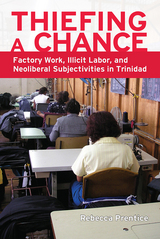 Thiefing a Chance: Factory Work, Illicit Labor, and Neoliberal Subjectivities in Trinidad
Rebecca Prentice
University Press of Colorado, 2015 When an IMF-backed program of liberalization opened Trinidad’s borders to foreign ready-made apparel, global competition damaged the local industry and unraveled worker entitlements and expectations but also presented new economic opportunities for engaging the “global” market. This fascinating ethnography explores contemporary life in the Signature Fashions garment factory, where the workers attempt to exploit gaps in these new labor configurations through illicit and informal uses of the factory, a practice they colloquially refer to as “thiefing a chance.”
Drawing on fifteen months of fieldwork, author Rebecca Prentice combines a vivid picture of factory life, first-person accounts, and anthropological analysis to explore how economic restructuring has been negotiated, lived, and recounted by women working in the garment industry during Trinidad’s transition to a neoliberal economy. Through careful social coordination, the workers “thief” by copying patterns, taking portions of fabric, teaching themselves how to operate machines, and wearing their work outside the factory. Even so, the workers describe their “thiefing” as a personal, individualistic enterprise rather than a form of collective resistance to workplace authority. By making and taking furtive opportunities, they embrace a vision of themselves as enterprising subjects while actively complying with the competitive demands of a neoliberal economic order.
Prentice presents the factory not as a stable institution but instead as a material and social space in which the projects, plans, and desires of workers and their employers become aligned and misaligned, at some moments in deep harmony and at others in rancorous conflict. Arguing for the productive power of the informal and illicit, Thiefing a Chance contributes to anthropological debates about the very nature of neoliberal capitalism and will be of great interest to undergraduate students, graduate students, and faculty in anthropology, labor studies, Caribbean studies, and development studies.
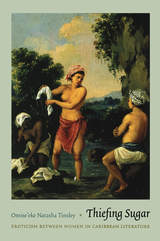 Thiefing Sugar: Eroticism between Women in Caribbean Literature
Omise eke Natasha Tinsley
Duke University Press, 2010 In Thiefing Sugar, Omise’eke Natasha Tinsley explores the poetry and prose of Caribbean women writers, revealing in their imagery a rich tradition of erotic relations between women. She takes the book’s title from Dionne Brand’s novel In Another Place, Not Here, where eroticism between women is likened to the sweet and subversive act of cane cutters stealing sugar. The natural world is repeatedly reclaimed and reinterpreted to express love between women in the poetry and prose that Tinsley analyzes. She not only recuperates stories of Caribbean women loving women, stories that have been ignored or passed over by postcolonial and queer scholarship until now, she also shows how those erotic relations and their literary evocations form a poetics and politics of decolonization. Tinsley’s interpretations of twentieth-century literature by Dutch-, English-, and French-speaking women from the Caribbean take into account colonialism, migration, labor history, violence, and revolutionary politics. Throughout Thiefing Sugar, Tinsley connects her readings to contemporary matters such as neoimperialism and international LGBT and human-rights discourses. She explains too how the texts that she examines intervene in black feminist, queer, and postcolonial studies, particularly when she highlights the cultural limitations of the metaphors that dominate queer theory in North America and Europe, including those of the closet and “coming out.”
Thieves' Latin
Peter Jay Shippy
University of Iowa Press, 2003 “Ah, writ happens.” Like the con men who rely on thieves' Latin to ply their trade, the poems in Peter Jay Shippy's award-winning collection don't play well with other poems. They are difficult. They rave. They are unsettling and blunt. They crash cars and ride tsunamis and hitch rides on tugs. They also provide a contemporary, ironic, and tender view of America, all the while layering wordplay, cleverness, and sentiment.
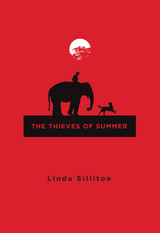 The Thieves of Summer
Linda Sillitoe
Signature Books, 2014 Set in Salt Lake City at the height of the Great Depression, Linda Sillitoe’s last novel opens with three little girls, eleven-year-old triplets, skipping in front of their house at 1300 South, across from Liberty Park. They giggle lightly as they chant:
Prin-cess Al-ice in Liberty Park
Munch-es ba-nan-as ’til way after dark.
Princess Alice is an elephant the children of Utah purchased by donating nickels and dimes to a circus. The girls don’t know this, but her handler takes the mammoth princess out on late-night strolls around the park when the moon is out. What they do know is that the elephant sometimes escapes and goes on a rampage, crashing through front-yard fences and collecting collars of clothesline laundry around her neck, a persistent train of barking dogs following behind. The girls’ father is a police officer who is investigating a boy’s disappearance. As the case unfolds, the perception of the park, with its eighty acres of trees and grass, will change from the epitome of freedom to a place to be avoided, even as Princess Alice moves to a secure confinement at a new zoo at the mouth of Emigration Canyon. The story is loosely based on the exploits of a real live elephant that lived in Liberty Park a decade before Sillitoe’s childhood in the neighborhood.
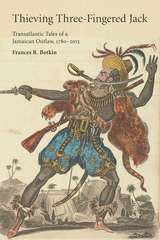 Thieving Three-Fingered Jack: Transatlantic Tales of a Jamaican Outlaw, 1780-2015
Botkin, Frances R.
Rutgers University Press, 2018 The fugitive slave known as “Three-Fingered Jack” terrorized colonial Jamaica from 1780 until vanquished by Maroons, self-emancipated Afro-Jamaicans bound by treaty to police the island for runaways and rebels. A thief and a killer, Jack was also a freedom fighter who sabotaged the colonial machine until his grisly death at its behest. Narratives about his exploits shed light on the problems of black rebellion and solutions administered by the colonial state, creating an occasion to consider counter-narratives about its methods of divide and conquer. For more than two centuries, writers, performers, and storytellers in England, Jamaica, and the United States have “thieved" Three Fingered Jack's riveting tale, defining black agency through and against representations of his resistance. Frances R. Botkin offers a literary and cultural history that explores the persistence of stories about this black rebel, his contributions to constructions of black masculinity in the Atlantic world, and his legacies in Jamaican and United States popular culture.
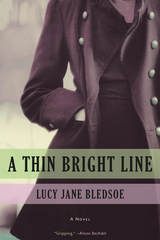 A Thin Bright Line
Lucy Jane Bledsoe
University of Wisconsin Press, 2016 At the height of the Cold War, Lucybelle Bledsoe is offered a job seemingly too good to pass up. However, there are risks. Her scientific knowledge and editorial skills are unparalleled, but her personal life might not withstand government scrutiny.
Leaving behind the wreckage of a relationship, Lucybelle finds solace in working for the visionary scientist who is extracting the first-ever polar ice cores. The lucidity of ice is calming and beautiful. But the joyful pangs of a new love clash with the impossible compromises of queer life. If exposed, she could lose everything she holds dear.
Based on the hidden life of the author’s aunt and namesake, A Thin Bright Line is a love story set amid Cold War intrigue, the origins of climate research, and the nascent civil rights movement. Poignant, brilliant, and moving, it reminds us to act on what we love, not just wish for it.
"It triumphs as an intimate and humane evocation of day-to-day life under inhumane circumstances."—New York Times Book Review
“Bledsoe covers a lot of ground here, imagining her intellectual aunt’s relationship to the queer cultural transformations of the 1950s, as well as the paranoia of the Cold War era.”—San Francisco Chronicle
 A Thin Cosmic Rain: Particles from Outer Space
Michael W. Friedlander
Harvard University Press, 2000 Enigmatic for many years, cosmic rays are now known to be not rays at all, but particles, the nuclei of atoms, raining down continually on the earth, where they can be detected throughout the atmosphere and sometimes even thousands of feet underground. This book tells the long-running detective story behind the discovery and study of cosmic rays, a story that stretches from the early days of subatomic particle physics in the 1890s to the frontiers of high-energy astrophysics today.
Writing for the amateur scientist and the educated general reader, Michael Friedlander, a cosmic ray researcher, relates the history of cosmic ray science from its accidental discovery to its present status. He explains how cosmic rays are identified and how their energies are measured, then surveys current knowledge and theories of thin cosmic rain. The most thorough, up-to-date, and readable account of these intriguing phenomena, his book makes us party to the search into the nature, behavior, and origins of cosmic rays—and into the sources of their enormous energy, sometimes hundreds of millions times greater than the energy achievable in the most powerful earthbound particle accelerators. As this search led unexpectedly to the discovery of new particles such as the muon, pion, kaon, and hyperon, and as it reveals scenes of awesome violence in the cosmos and offers clues about black holes, supernovas, neutron stars, quasars, and neutrinos, we see clearly why cosmic rays remain central to an astonishingly diverse range of research studies on scales infinitesimally small and large.
Attractively illustrated, engagingly written, this is a fascinating inside look at a science at the center of our understanding of our universe.
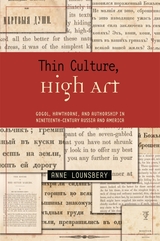 Thin Culture, High Art: Gogol, Hawthorne, and Authorship in Nineteenth-Century Russia and America
Anne Lounsbery
Harvard University Press In Russia and America a perceived absence of literature gave rise to grandiose notions of literature's importance. This book examines how two traditions worked to refigure cultural lack, not by disputing it but by insisting on it, by representing the nation's (putative) cultural deficit as a moral and aesthetic advantage. Through a comparative study of Gogol and Hawthorne, this book examines parallels that seem particularly striking when we consider that these traditions had virtually no points of contact. Yet the unexpected parallels between these authors are the result of historical similarities: Russians and Americans felt obliged to develop a manifestly national literature ex nihilo, and to do so in an age when an unprecedented diversity of printed texts were circulating among an ever more heterogeneous reading public. Responding to these conditions, Gogol and Hawthorne articulated ideas that would prove influential for their nations' literary development: that is, despite the culture's thinness and deviation from European norms, it would soon produce works that would surpass European literature in significance.
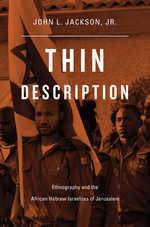 Thin Description: Ethnography and the African Hebrew Israelites of Jerusalem
John L. Jackson, Jr.
Harvard University Press, 2013 The African Hebrew Israelites of Jerusalem are often dismissed as a fringe cult for their beliefs that African Americans are descendants of the ancient Israelites and that veganism leads to immortality. But John L. Jackson questions what “fringe” means in a world where cultural practices of every stripe circulate freely on the Internet. In this poignant and sophisticated examination of the limits of ethnography, the reader is invited into the visionary, sometimes vexing world of the AHIJ. Jackson challenges what Clifford Geertz called the “thick description” of anthropological research through a multidisciplinary investigation of how the AHIJ use media and technology to define their public image in the twenty-first century.
Moving far beyond the “modest witness” of nineteenth-century scientific discourse or the “thick descriptions” of twentieth-century anthropology, Jackson insists that Geertzian thickness is an impossibility, especially in a world where the anthropologist’s subject is a self-aware subject—one who crafts his own autoethnography while critically consuming the ethnographer’s offerings. Thin Description takes as its topic a group situated along the fault lines of several diasporas—African, American, Jewish—and provides an anthropological account of how race, religion, and ethnographic representation must be understood anew in the twenty-first century lest we reenact old mistakes in the study of black humanity.
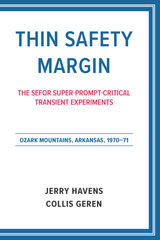 Thin Safety Margin: The SEFOR Super-Prompt-Critical Transient Experiments, Ozark Mountains, Arkansas, 1970–71
Jerry Havens
Arkansas Scholarly Editions , 2021 Thin Safety Margin charts the history of SEFOR, a twenty-megawatt reactor that operated for three years in the rural Ozark Mountains of Arkansas as part of an internationally sponsored program designed to demonstrate the Doppler effect in plutonium-oxide-fueled fast reactors. Authors Jerry Havens and Collis Geren draw upon this history to assess the accidental explosion risk inherent in using fast reactors to reduce the energy industry’s carbon dioxide emissions. If a sufficiently powerful fast-neutron explosion were to cause the containment of a reactor such as SEFOR’s to fail, the reactor’s radiotoxic plutonium fuel could vaporize and escape into the surrounding environment, resulting in a miles-wide swath of destruction. The demonstration that the Doppler effect could prevent limited runaway reactivity in the event of an accident or natural disaster proved a critical development in producing safe nuclear technology. But while SEFOR was hailed as a breakthrough in nuclear safety, Havens and Geren’s examination of the project, including the partial SCRAM that occurred in late 1970, confirms experts’ concerns regarding the limits of the Doppler effect and presents a compelling argument for caution in adopting fast reactors like SEFOR to reduce carbon emissions.
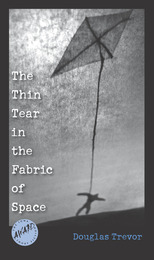 The Thin Tear In The Fabric Of Space
Douglas Trevor
University of Iowa Press, 2005
The Thin Tear in the Fabric of Space gathers stories about coping with grief, trying to love people who have died, and—more broadly—leaving old versions of the self behind, sometimes by choice and sometimes out of necessity. In each of the nine stories, Douglas Trevor’s characters are forced to face uncomfortable realities. For Elena Gavrushnekov in the title story, that means admitting after the death of her beloved that she still longs for contact with other human bodies. For Peter in “Central Square,” it is realizing that, like his deceased father before him, he is drinking himself to death. Unable to confront his incapacitated mother and the memory of the plane crash that killed his father, Edwin Morris in “Saint Francis in Flint” is compelled to acknowledge that his saintly aspirations are not what they appear to be, while Sharon Mackaney in “The Surprising Weight of the Body's Organs” struggles with uncontrollable outbursts of rage in the wake of her young son’s death.
In moments of great pain and loss, when self-expression seems impossible and terribly useless, the characters in these stories nonetheless discover the tenderness of others. In “The River,” the narrator finds that the friendship he has forged with a French girl with whom he can only just communicate has bred intense, almost intuitive compassion, while in “Fellowship of the Bereaved,” the disconsolate brother of the deceased sister who occupies the empty center of the story uncovers not only anger in his parents but also empathy and humor. As these characters persevere in their own lives, they do so mindful of, and humanized by, the experiences of having seen people they know and love slip unexpectedly into the thin tear in the fabric of space: that quiet chasm that so resolutely separates the living from the dead.
The Thin Wall
Martha Rhodes
University of Pittsburgh Press, 2017 Past Praise for Mother Quiet:
"The aim of poetry (and the higher kind of thriller) is to be unexpected and memorable. So a poem about death might treat it in a way that combines the bizarre and the banal: the Other Side as some kind of institution—a creepy hospital, an officious hotel or retirement home. Martha Rhodes takes such an approach in 'Ambassadors to the Dead,' from her abrupt, unsettling, artfully distorted, indelible new book Mother Quiet. Blending the matter-of-fact with the surreal, as a way of comprehending the stunning, final reality, Rhodes is an inheritor of Emily Dickinson's many poems on the same subject."
—Robert Pinsky, Washington Post
THINE
Kate Partridge
Tupelo Press, 2023 THINE explores shifting iterations of the poetic self, both in body and in perspective, within the context of rapidly changing landscapes in the American West.
THINE’s observational approach draws together ecopoetics with art and myth, turning a skeptical eye toward predictions of both apocalypse and hope. In conversation with artistic renderings of and against the self in the West–Agnes Martin’s grids, Willa Cather’s letters, Walter di Maria’s The Lightning Field–these poems find beauty in the impermanence of land, animals, and people. THINE meditates, with affectionate irony, on what it means to make new lives in the midst of the unknown.
Thine Own Self: Individuality in Edith Stein's Later Writings
Sarah Borden Sharkey
Catholic University of America Press, 2010 Thine Own Self investigates Stein's account of human individuality and her mature philosophical positions on being and essence. Sarah Borden Sharkey shows how Stein's account of individual form adapts and updates the Aristotelian-Thomistic tradition in order to account for evolution and more contemporary insights in personality and individual distinctiveness.
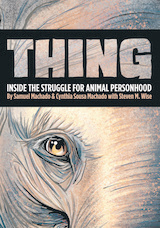 Thing: Inside the Struggle for Animal Personhood
Samuel Machado and Cynthia Sousa Machado with Steven M. Wise
Island Press, 2023 Happy has lived at the Bronx Zoo for most of her 48 years, and for more than a decade has remained largely isolated and lonely. Like all elephants, Happy has a complex mind and a deep social, intellectual, and emotional life; she desires to make choices and has a sense of self-recognition. But like all nonhuman animals, Happy is considered a thing in the eye of the law, with no fundamental rights. Due to a series of groundbreaking legal cases, however, this is beginning to change—and Happy’s liberation is at the forefront. A vibrant and personal graphic novel, Thing: Inside the Struggle for Animal Personhood traces this moving story and makes the legal and scientific case for animal personhood.
Led by lawyer Steven M. Wise and aided by some of the world’s most respected animal behavior and cognition scientists, the Nonhuman Rights Project has filed cases on behalf of nonhuman animals like Happy since 2013. Through this work, they have forced courts to consider the evidence of their clients’ cognitive abilities and their legal arguments for personhood, opening the door for similar cases worldwide. In Thing, comic artists Sam Machado and Cynthia Sousa Machado bring together Wise’s groundbreaking work and their powerful illustrations in the first graphic nonfiction book about the animal personhood movement. Beginning with Happy’s story and the central ideas behind animal rights, Thing then turns to the scientists that are revolutionizing our understanding of the minds of nonhuman animals such as great apes, elephants, dolphins, and whales. As we learn more about these creatures’ inner lives and autonomy, the need for the greater protections provided by legal rights becomes ever more urgent.
With cases like Happy’s growing in number and spanning from Argentina to India, nations around the world are beginning to recognize the rights of animals. Combining legal and social history, innovative science, and illustrated storytelling, Thing presents a visionary new way of relating to the nonhuman world.
 A Thing Is Only Known When It Is Gone
Joe Baumann
University of Wisconsin Press, 2025 Flowers bloom from the body of a man after his lover’s touch. Grieving parents find a way to communicate with their lost children. A teacher with water in his veins is held accountable when the extracurricular club he advises goes rogue. In these and other fantastical stories, Joe Baumann explores relationships, mostly queer, through the lens of the bizarre.
The stories in A Thing Is Only Known When It Is Gone are told in lyrical, often startling prose. Baumann’s experimentation with the surreal avoids gimmick and easy metaphor, keeping the complexity of the characters at the center. The strange worlds of these protagonists distort and reflect our own back to us, like the funhouse mirrors in “Morphology” that begin to change the fabric of reality.
Ultimately, we may not want to live in a world in which our broken hearts are on display in external cages. But Baumann’s sophisticated, nuanced storytelling makes us wonder, however briefly, whether such a world might be preferable to ours.
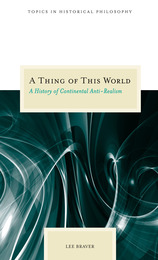 A Thing of This World: A History of Continental Anti-Realism
Lee Braver
Northwestern University Press, 2007 At a time when the analytic/continental split dominates contemporary philosophy, this ambitious work offers a careful and clear-minded way to bridge that divide. Combining conceptual rigor and clarity of prose with historical erudition, A Thing of This World shows how one of the standard issues of analytic philosophy--realism and anti-realism--has also been at the heart of continental philosophy.
Using a framework derived from prominent analytic thinkers, Lee Braver traces the roots of anti-realism to Kant's idea that the mind actively organizes experience. He then shows in depth and in detail how this idea evolves through the works of Hegel, Nietzsche, Heidegger, Foucault, and Derrida. This narrative presents an illuminating account of the
history of continental philosophy by explaining how these thinkers build on each other's attempts to develop new concepts of reality and truth in the wake of the rejection of realism. Braver demonstrates that the analytic and continental traditions have been discussing the same issues, albeit with different vocabularies, interests, and approaches.
By developing a commensurate vocabulary, his book promotes a dialogue between the two branches of philosophy in which each can begin to learn from the other.
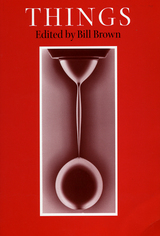 Things
Edited by Bill Brown
University of Chicago Press, 2004 This book is an invitation to think about why children chew pencils; why we talk to our cars, our refrigerators, our computers; rosary beads and worry beads; Cuban cigars; why we no longer wear hats that we can tip to one another and why we don't seem to long to; what has been described as bourgeois longing. It is an invitation to think about the fetishism of daily life in different times and in different cultures. It is an invitation to rethink several topics of critical inquiry—camp, collage, primitivism, consumer culture, museum culture, the aesthetic object, still life, "things as they are," Renaissance wonders, "the thing itself"—within the rubric of "things," not in an effort to foreclose the question of what sort of things these seem to be, but rather to suggest new questions about how objects produce subjects, about the phenomenology of the material everyday, about the secret life of things.
Based on an award-winning special issue of the journal Critical Inquiry, Things features eighteen thought-evoking essays by contributors including Bill Brown, Matthew L. Jones, Bruno Latour, W. J. T. Mitchell, Jessica Riskin, Jeffrey T. Schnapp, Peter Schwenger, Charity Scribner, and Alan Trachtenberg.
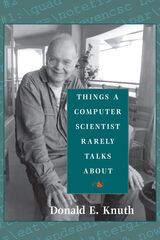 Things a Computer Scientist Rarely Talks About
Donald E. Knuth
CSLI, 2003 How does a computer scientist understand infinity? What can probability theory teach us about free will? Can mathematical notions be used to enhance one's personal understanding of the Bible?
Perhaps no one is more qualified to address these questions than Donald E. Knuth, whose massive contributions to computing have led others to nickname him "The Father of Computer Science"—and whose religious faith led him to understand a fascinating analysis of the Bible called the 3:16 project. In this series of six spirited, informal lectures, Knuth explores the relationships between his vocation and his faith, revealing the unique perspective that his work with computing has lent to his understanding of God.
His starting point is the 3:16 project, an application of mathematical "random sampling" to the books of the Bible. The first lectures tell the story of the project's conception and execution, exploring its many dimensions of language translation, aesthetics, and theological history. Along the way, Knuth explains the many insights he gained from such interdisciplinary work. These theological musings culminate in a surprising final lecture tackling the ideas of infinity, free will, and some of the other big questions that lie at the juncture of theology and computation.
Things a Computer Scientist Rarely Talks About, with its charming and user-friendly format—each lecture ends with a question and answer exchange, and the book itself contains more than 100 illustrations—is a readable and intriguing approach to a crucial topic, certain to edify both those who are serious and curious about their faiths and those who look at the science of computation and wonder what it might teach them about their spiritual world.
Includes "Creativity, Spirituality, and Computer Science," a panel discussion featuring Harry Lewis, Guy L. Steele, Jr., Manuela Veloso, Donald E. Knuth, and Mitch Kapor.
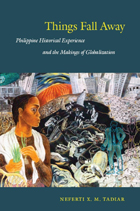 Things Fall Away: Philippine Historical Experience and the Makings of Globalization
Neferti X. M. Tadiar
Duke University Press, 2009 In Things Fall Away, Neferti X. M. Tadiar offers a new paradigm for understanding politics and globalization. Her analysis illuminates both the power of Filipino subaltern experience to shape social and economic realities and the critical role of the nation’s writers and poets in that process. Through close readings of poems, short stories, and novels brought into conversation with scholarship in anthropology, sociology, politics, and economics, Tadiar demonstrates how the devalued experiences of the Philippines’ vast subaltern populations—experiences that “fall away” from the attention of mainstream and progressive accounts of the global capitalist present—help to create the material conditions of social life that feminists, urban activists, and revolutionaries seek to transform. Reading these “fallout” experiences as vital yet overlooked forms of political agency, Tadiar offers a new and provocative analysis of the unrecognized productive forces at work in global trends such as the growth of migrant domestic labor, the emergence of postcolonial “civil society,” and the “democratization” of formerly authoritarian nations. Tadiar treats the historical experiences articulated in feminist, urban protest, and revolutionary literatures of the 1960s–90s as “cultural software” for the transformation of dominant social relations. She considers feminist literature in relation to the feminization of labor in the 1970s, when between 300,000 and 500,000 prostitutes were working in the areas around U.S. military bases, and in the 1980s and 1990s, when more than five million Filipinas left the country to toil as maids, nannies, nurses, and sex workers. She reads urban protest literature in relation to authoritarian modernization and crony capitalism, and she reevaluates revolutionary literature’s constructions of the heroic revolutionary subject and the messianic masses, probing these social movements’ unexhausted cultural resources for radical change.
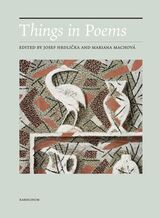 Things in Poems: From the Shield of Achilles to Hyperobjects
Edited by Josef Hrdlicka and Mariana Machová
Karolinum Press, 2022 An exploration of the place of material objects in modern poetry.
In this volume, fifteen scholars and poets, from Austria, Britain, Czechia, France, Germany, Ireland, Lithuania, and Russia, explore the topic of things and objects in poetry written in a number of different languages and in different eras. The book begins with ancient poetry, then moves on to demonstrate the significance of objects in the Chinese poetic tradition. From there, the focus shifts to things and objects in the poetry of the twentieth and the twenty-first century, examining the work of Czech, Polish, and Russian poets alongside other key figures such as Rilke, Francis Ponge, William Carlos Williams, and Paul Muldoon. Along the way, the reader gets an introduction to key terms and phrases that have been associated with things in the course of poetic history, such as ekphrasis, objective lyricism. and hyperobjects.
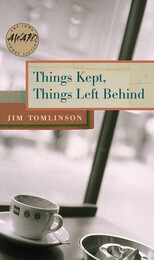 Things Kept, Things Left Behind
Jim Tomlinson
University of Iowa Press, 2006 The stories in Things Kept, Things Left Behind explore the ambiguities of kept secrets, the tangles of abandoned pasts, and uneasy accommodations. Jim Tomlinson’s characters each face the desire to reclaim dreams left behind, along with something of the dreamer that was also lost. Starkly rendered, these spiraling characters inhabit a specific place and class---small-town Kentucky, working-class America---but the stories, told in all their humor and tragedy, are universal.In each story the characters face conflict, sometimes within themselves, sometimes with each other. Each carries a past and with it an urge to return and repair. In “First Husband, First Wife,” ex-spouses are repeatedly drawn together by a shared history they cannot seem to escape, and they are finally forced to choose between leaving the past or leaving each other. LeAnn and Cass are grown sisters who conspire to help their prideful mother in “Things Kept.” “Prologue” is a voyeuristic journey through the surprisingly different lives of two star-crossed friends, each with its successes and pitfalls, told through their letters over thirty-five years. In “Stainless,” Annie and Warren divide their possessions on the final night of their marriage. Their realtor has advised them to “declutter” the house they are leaving, but they discover that most of the clutter cannot be so easily removed. The choices are never simple, and for every thing kept, something must be abandoned. Tomlinson’s characters struggle but eventually find their way, often unknowingly, to points of departure, to places where things just might change.
Things Maps Don't Tell Us: An Adventure into Map Interpretation
Armin K. Lobeck
University of Chicago Press, 1993 "The book is a treasure trove of tidbits describing how the world around us came about. . . . Things Maps Don't Tell Us actually communicates a great deal about the things maps can tell us if we care to look carefully underneath the printed symbols."—James E. Young, Cartographic Perspectives
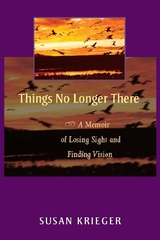 Things No Longer There: A Memoir of Losing Sight and Finding Vision
Susan Krieger
University of Wisconsin Press, 2005 Things No Longer There is a lovingly crafted collection of personal stories about the author's struggle toward enlightenment while losing her eyesight. It is also, more broadly, about invisible landscapes—places of the heart that linger long after they have disappeared from the world outside. In these ten brief tales and one novella-length intimate drama, Susan Krieger takes us on a series of adventures in vision, a journey both inward and to various parts of the country. We travel with her as she goes birdwatching before sunrise in the New Mexico desert, learns to walk with a white cane, revisits an old love, returns to a summer camp of her youth, and reflects on the nature of blindness and sight.
Krieger's touching memoir explores the ways that outer landscapes may change and sight may be lost, but inner visions persist, giving meaning, jarring the senses with a very different picture than what appears before the eyes. This book will reward both the general reader and those interested in disability studies, feminist ethnography, and lesbian studies.
Things Seen and Unseen: Discourse and Ideology in Tokugawa Nativism
Harry D. Harootunian
University of Chicago Press, 1988 This long-awaited work explores the place of kokugaku (rendered here as "nativism") during Japan's Tokugawa period. Kokugaku, the sense of a distinct and sacred Japanese identity, appeared in the eighteenth century in reaction to the pervasive influence of Chinese culture on Japan. Against this influence, nativists sought a Japanese sense of difference grounded in folk tradition, agricultural values, and ancient Japanese religion. H. D. Harootunian treats nativism as a discourse and shows how it functioned ideologically in Tokugawa Japan.
Things That Burn
Jacqueline Berger
University of Utah Press, 2005 The Agha Shahid Ali Prize in Poetry was inaugurated in 2003 to honor the late poet, a nationally recognized author of numerous collections of poetry and a former professor at the University of Utah. Things That Burn by Jacqueline Berger is the 2004 prizewinning volume selected by this year’s judge, former U.S. Poet Laureate Mark Strand. In this evocative collection Berger dissects in ardent language and rich imagery the ways that hunger and longing propel us through our lives, offering the reader a postmortem of passion and desire.
|
|


